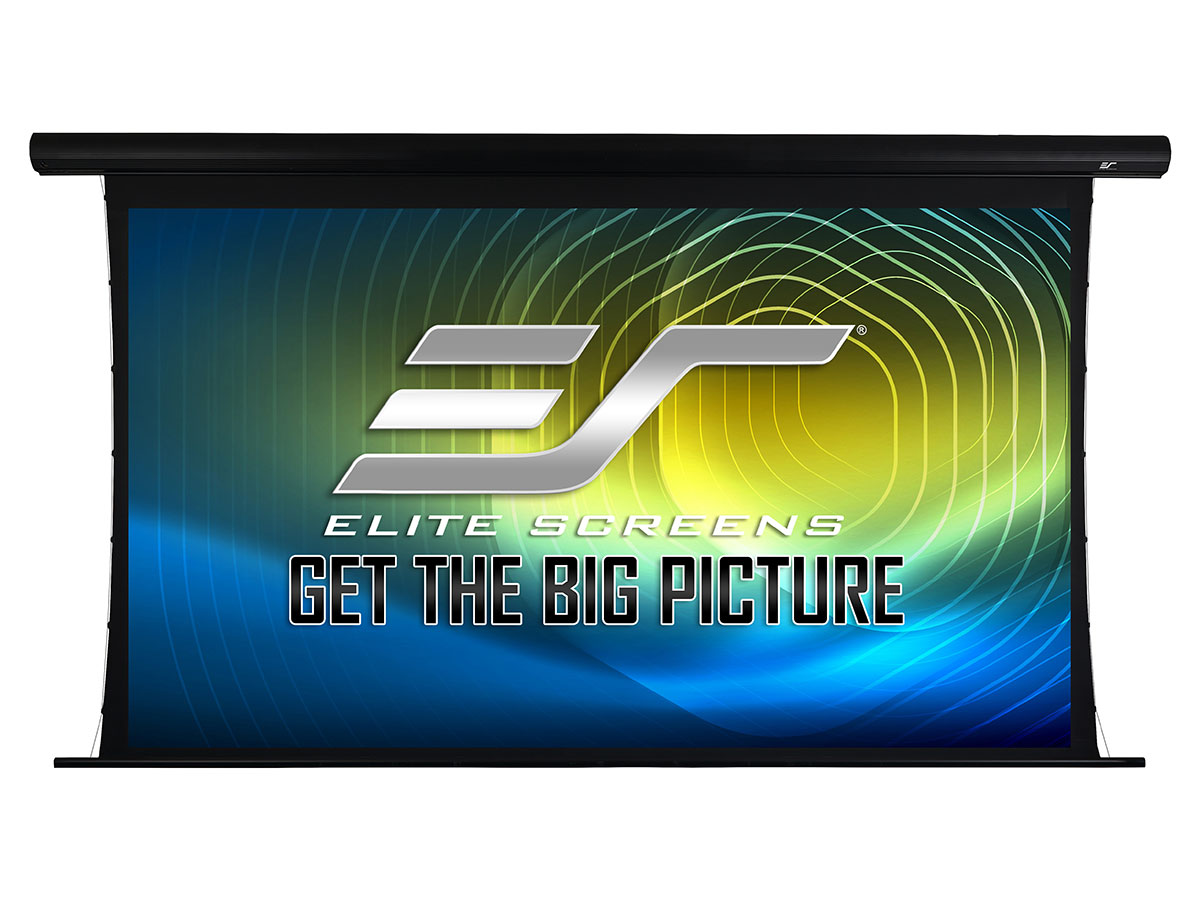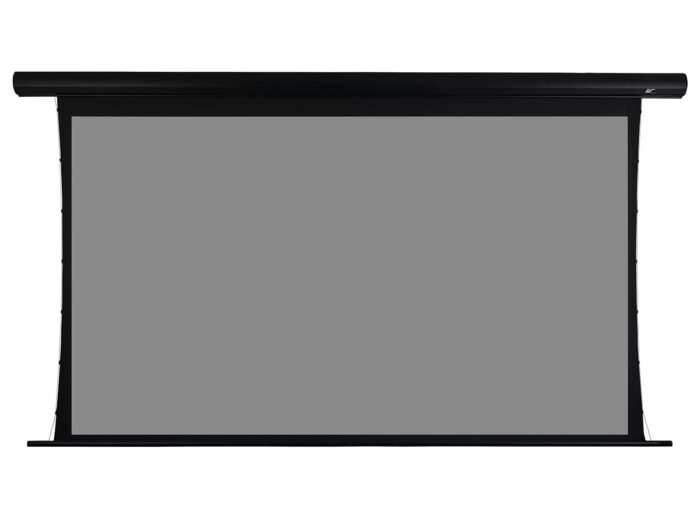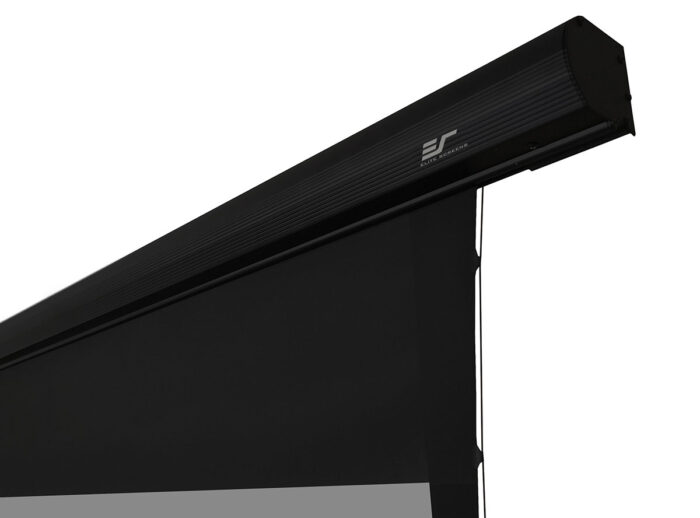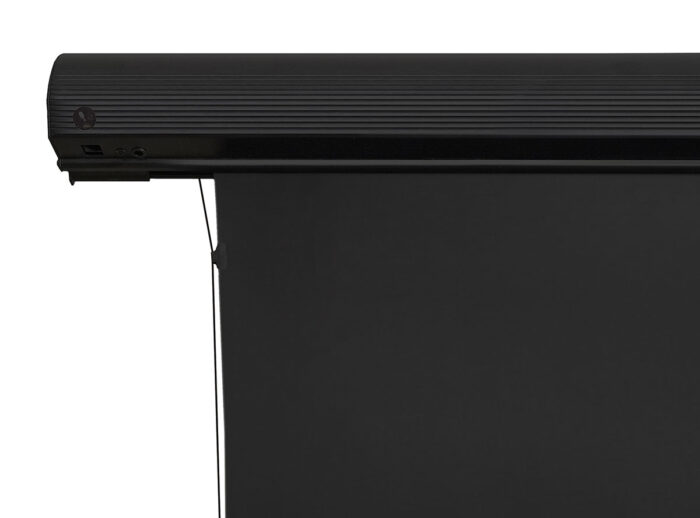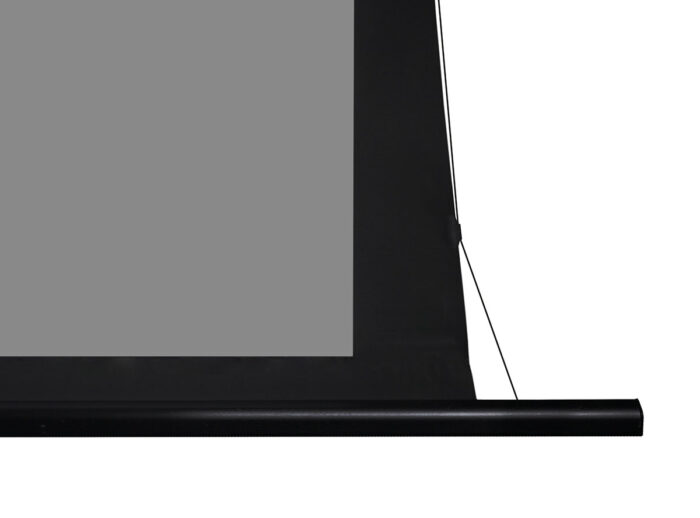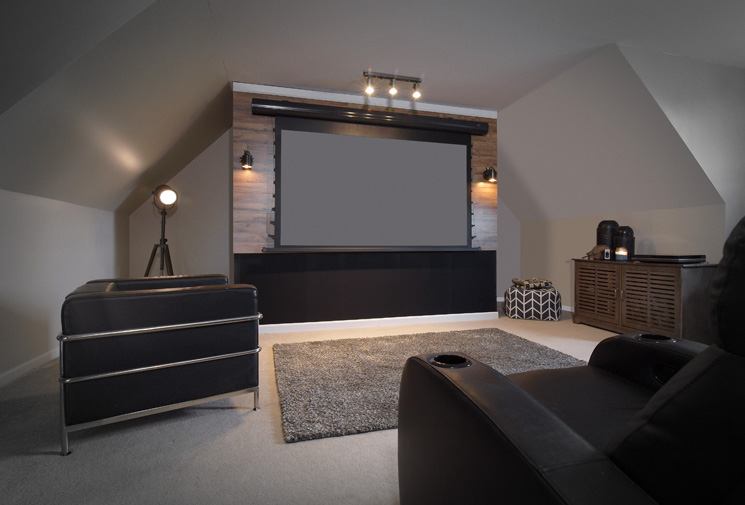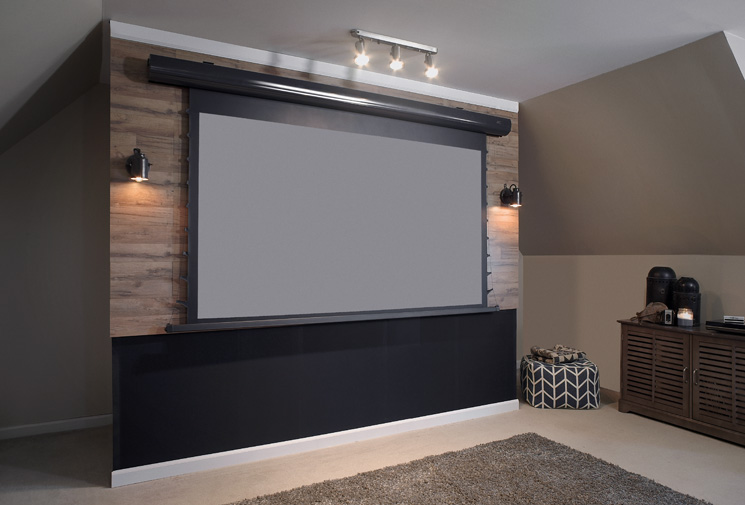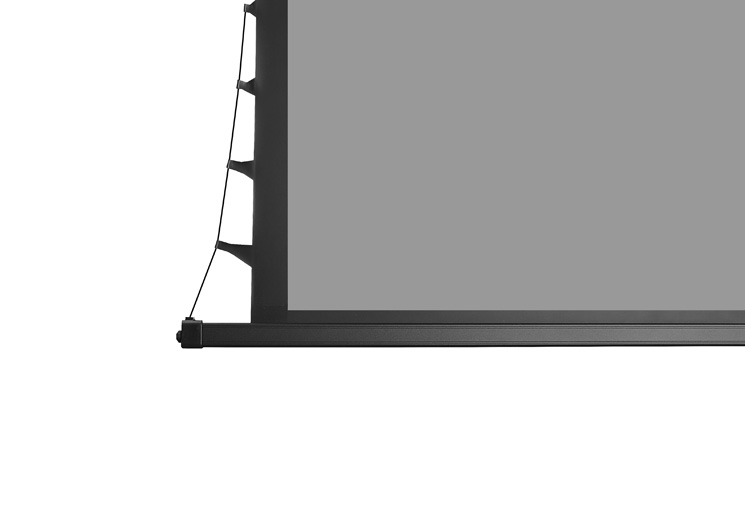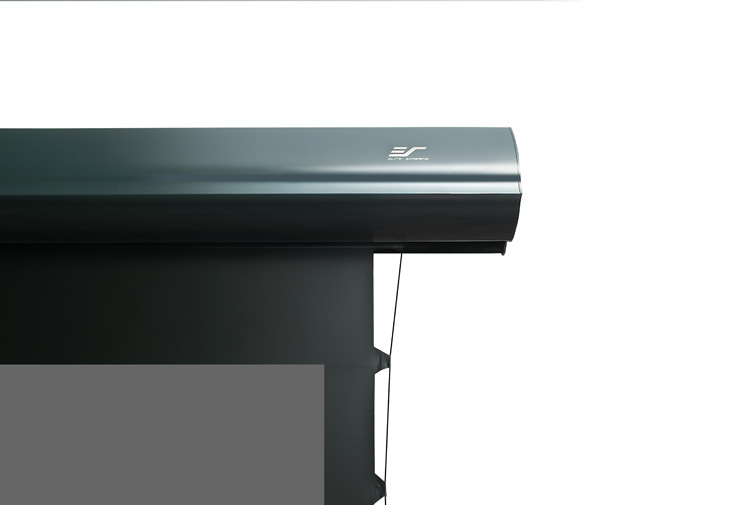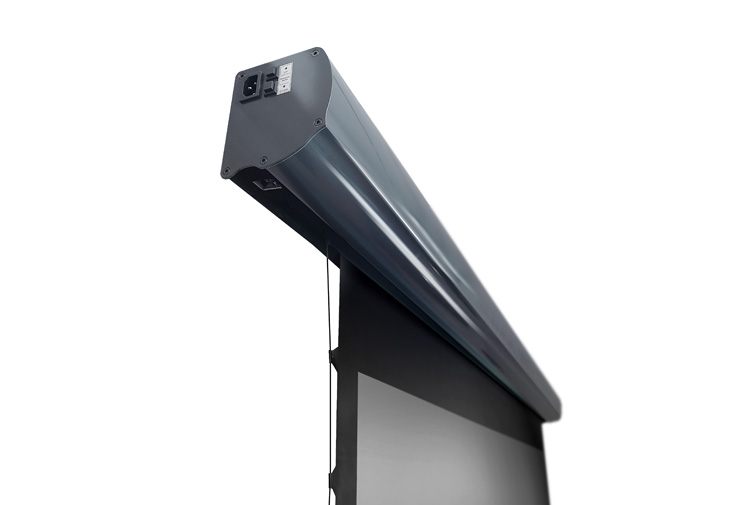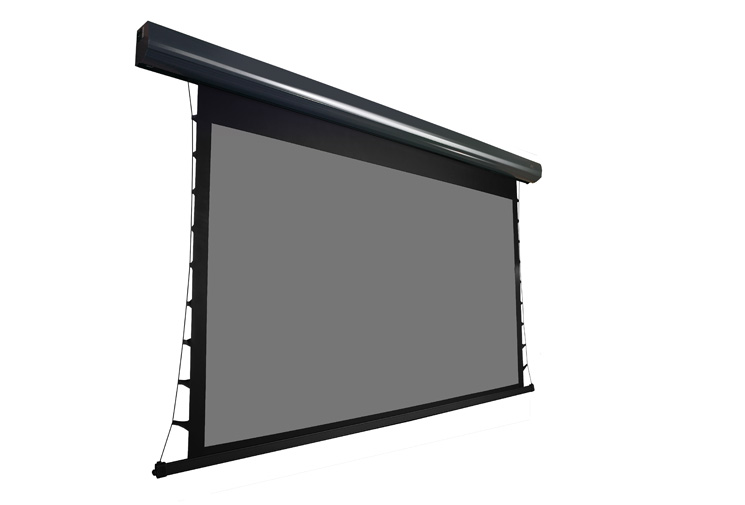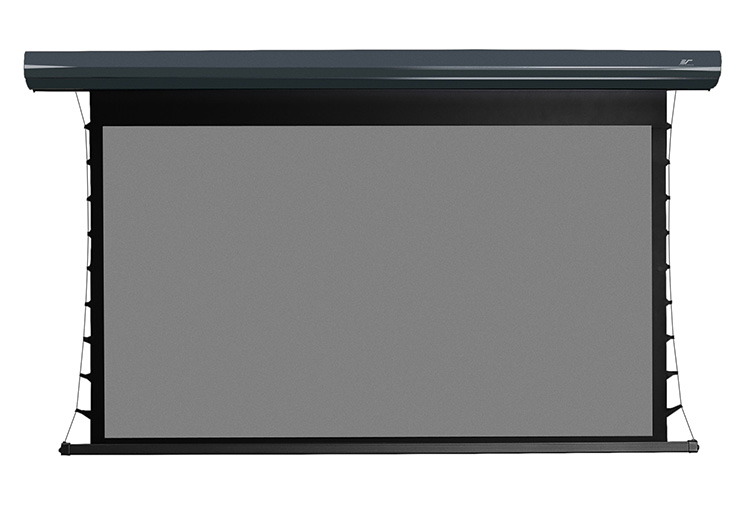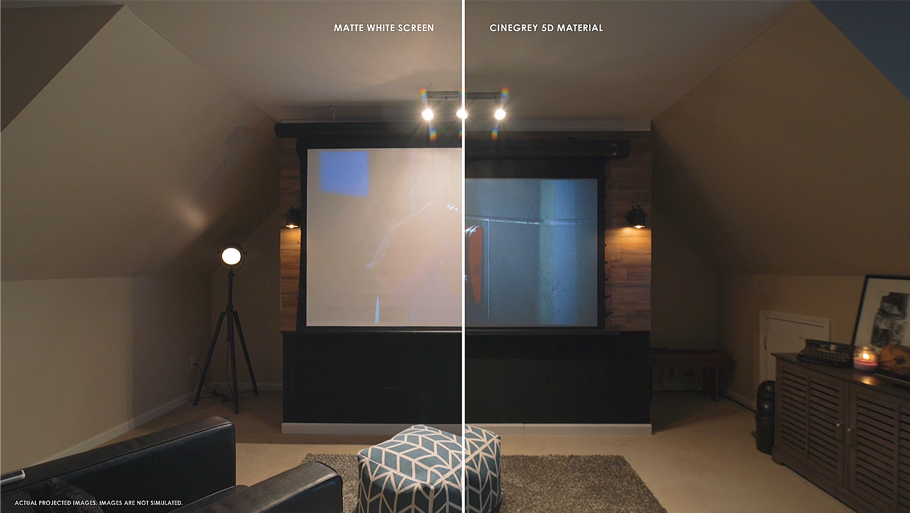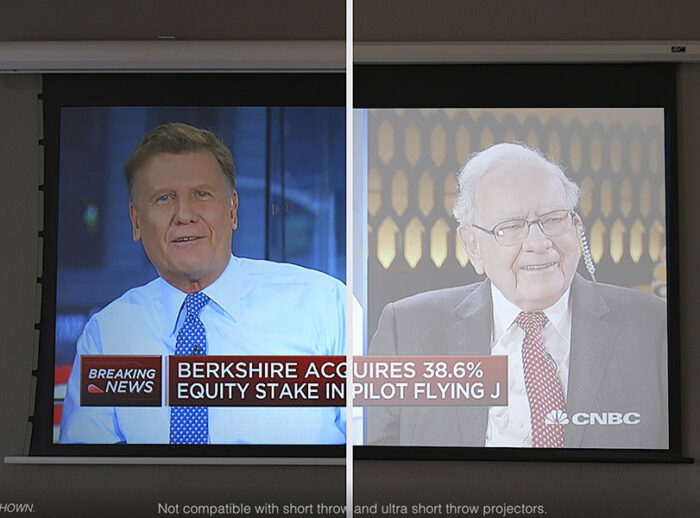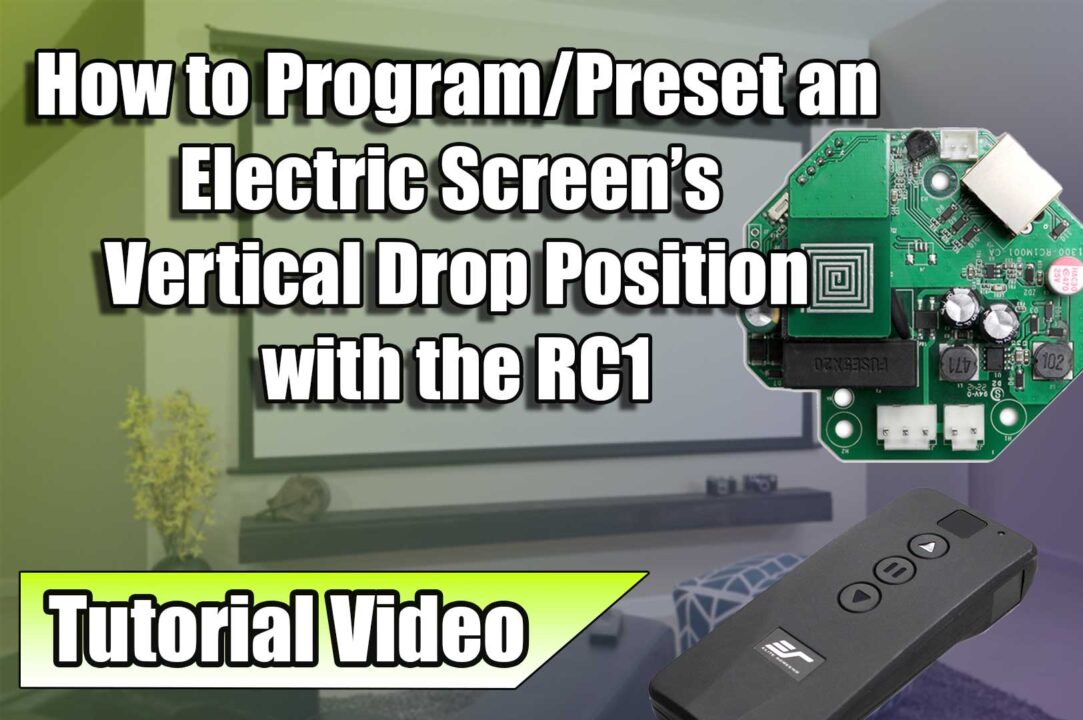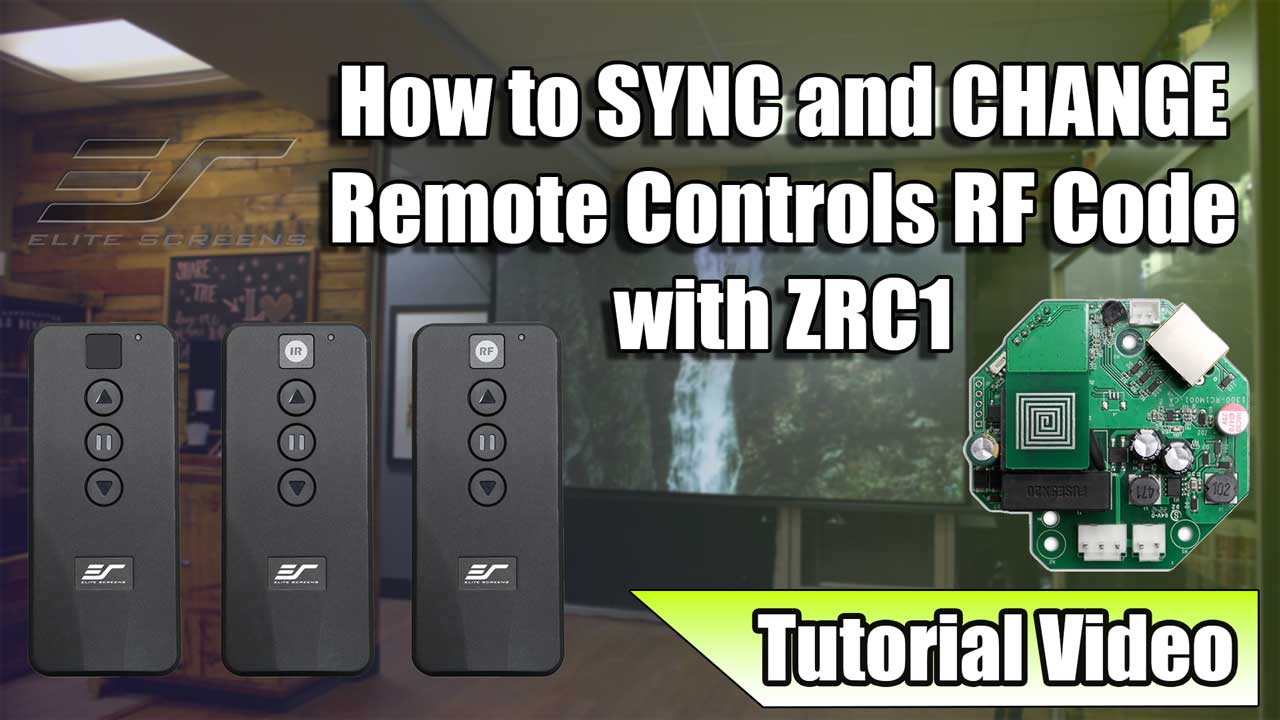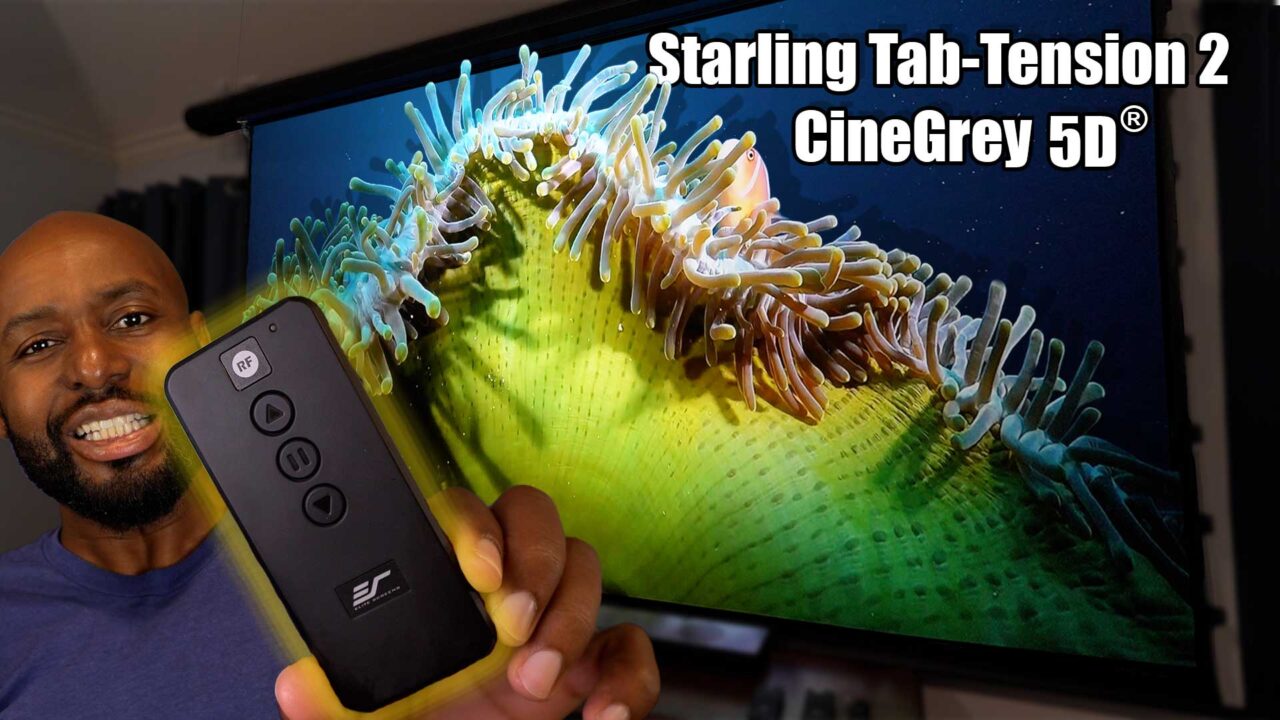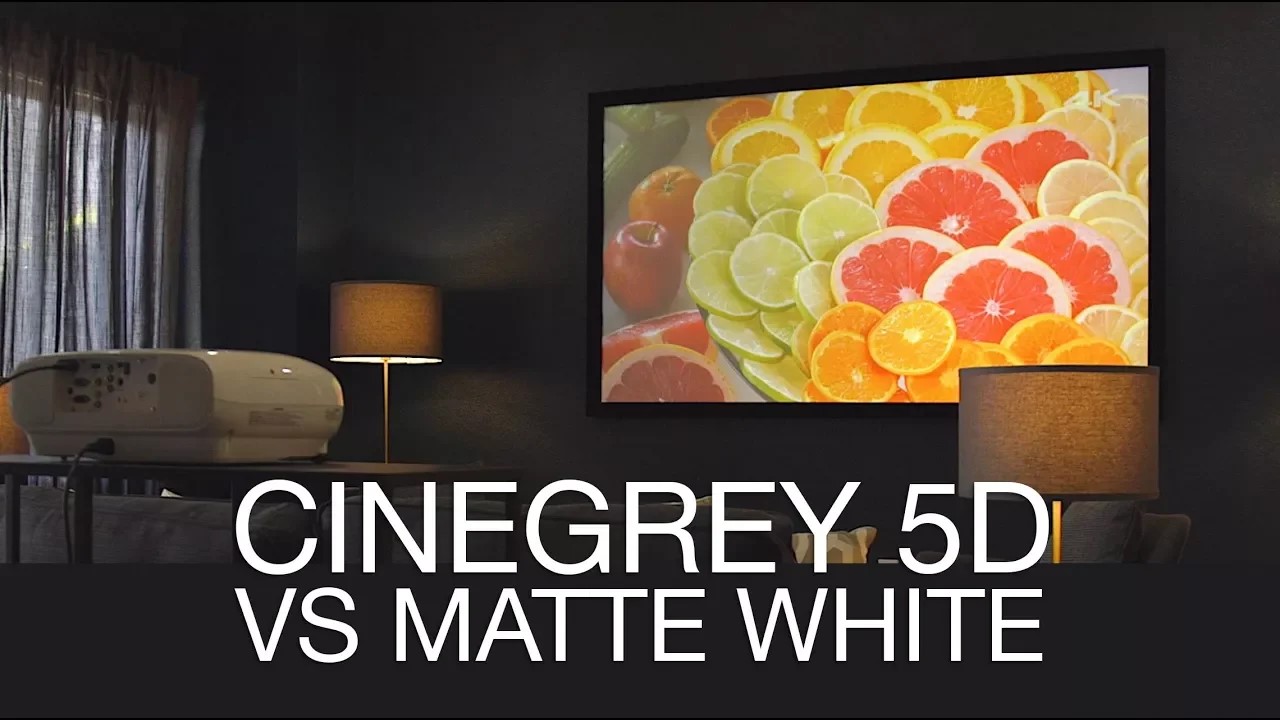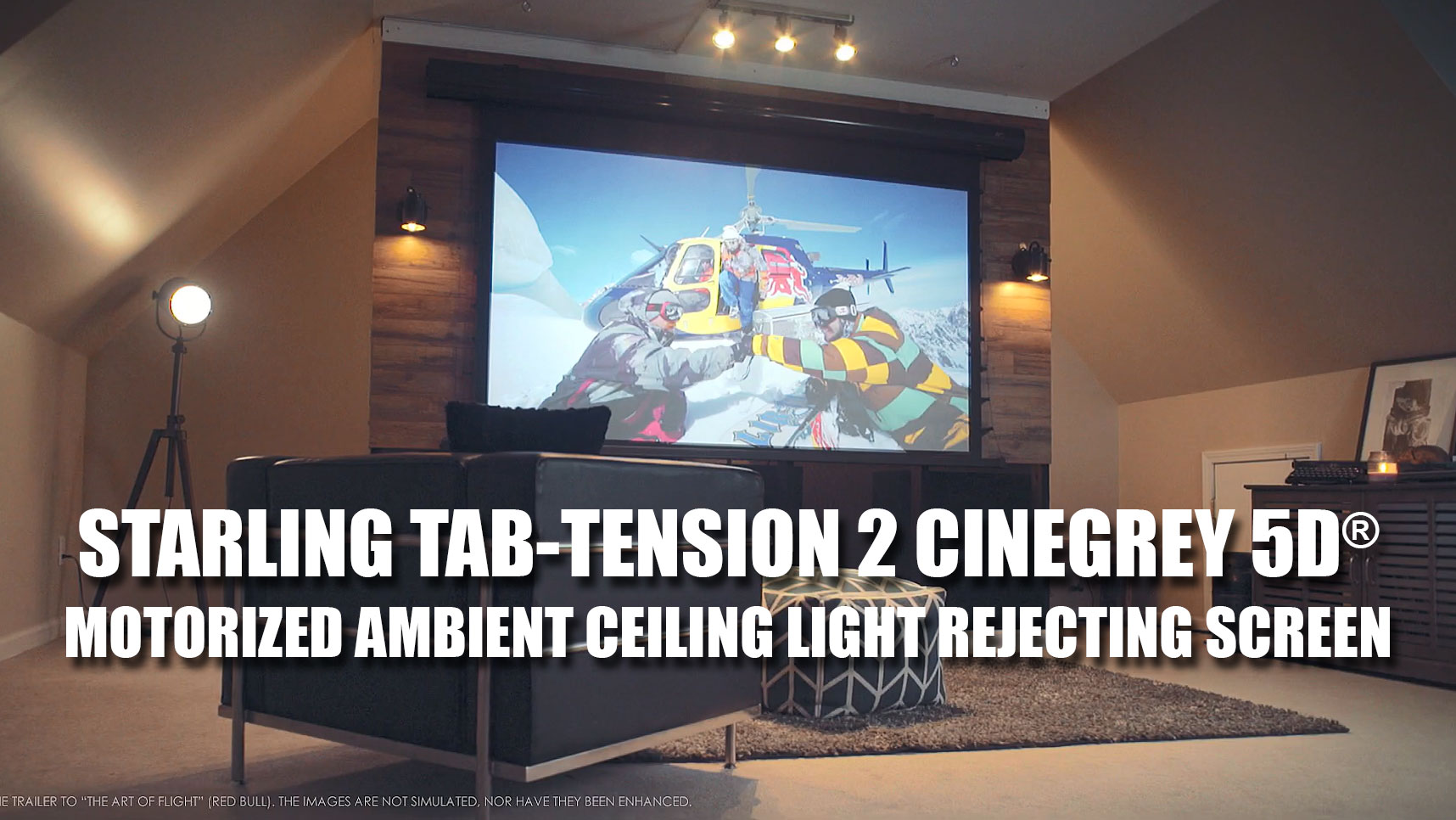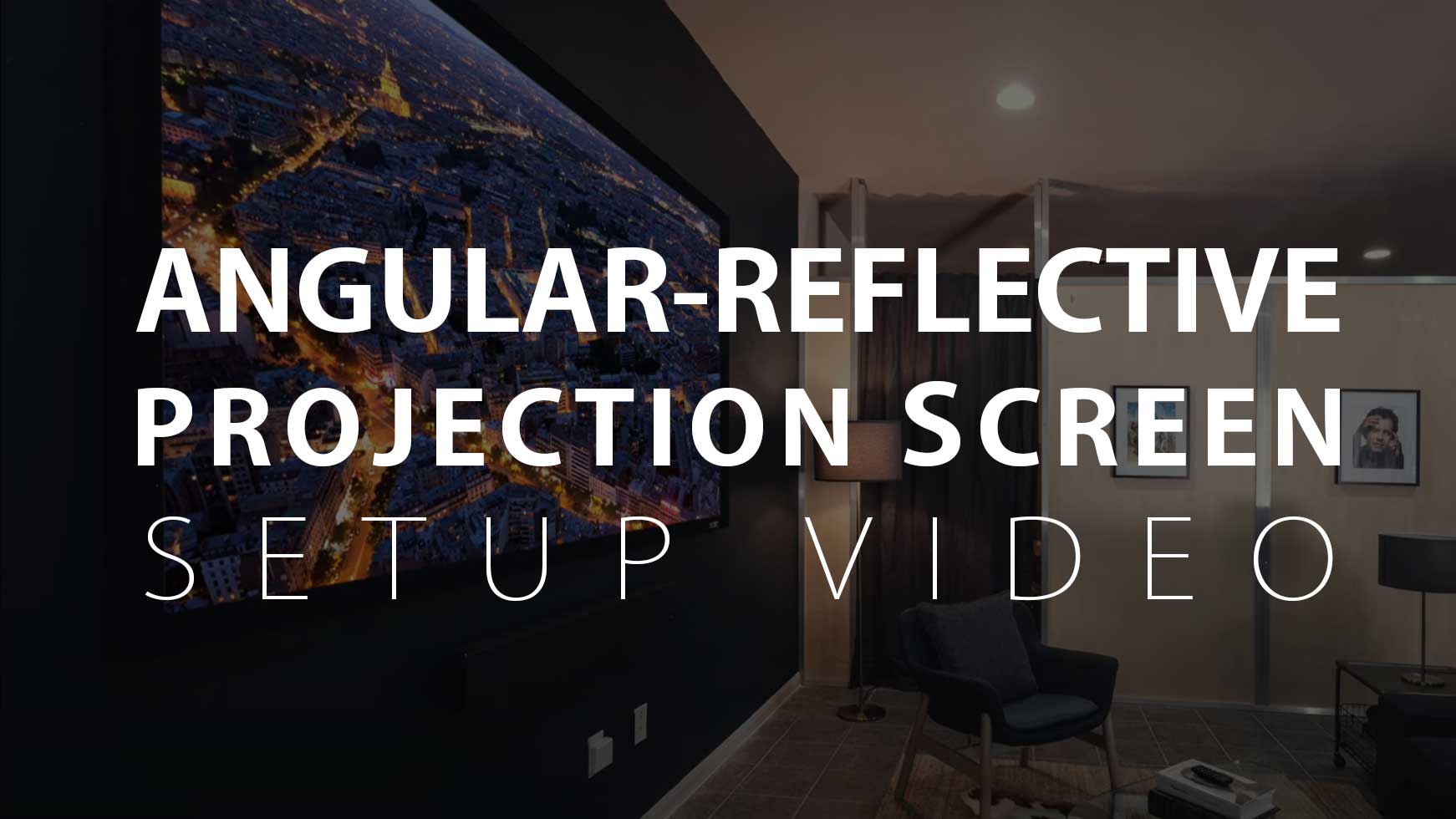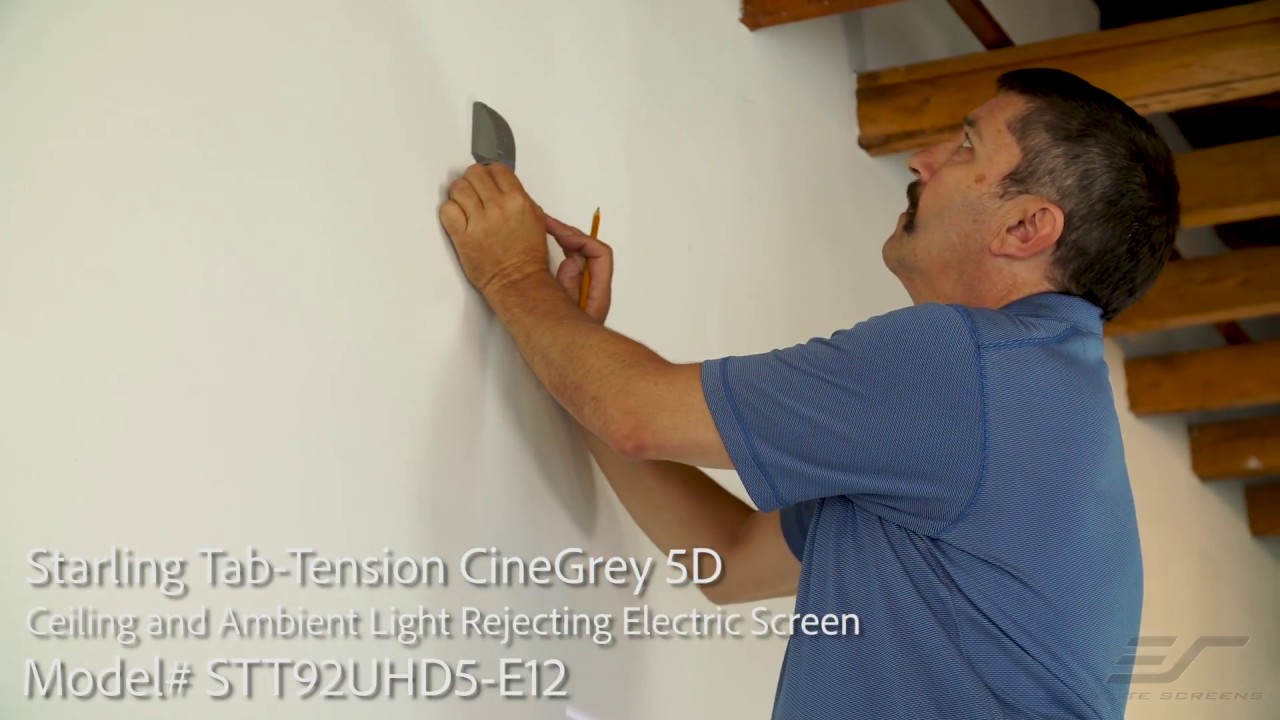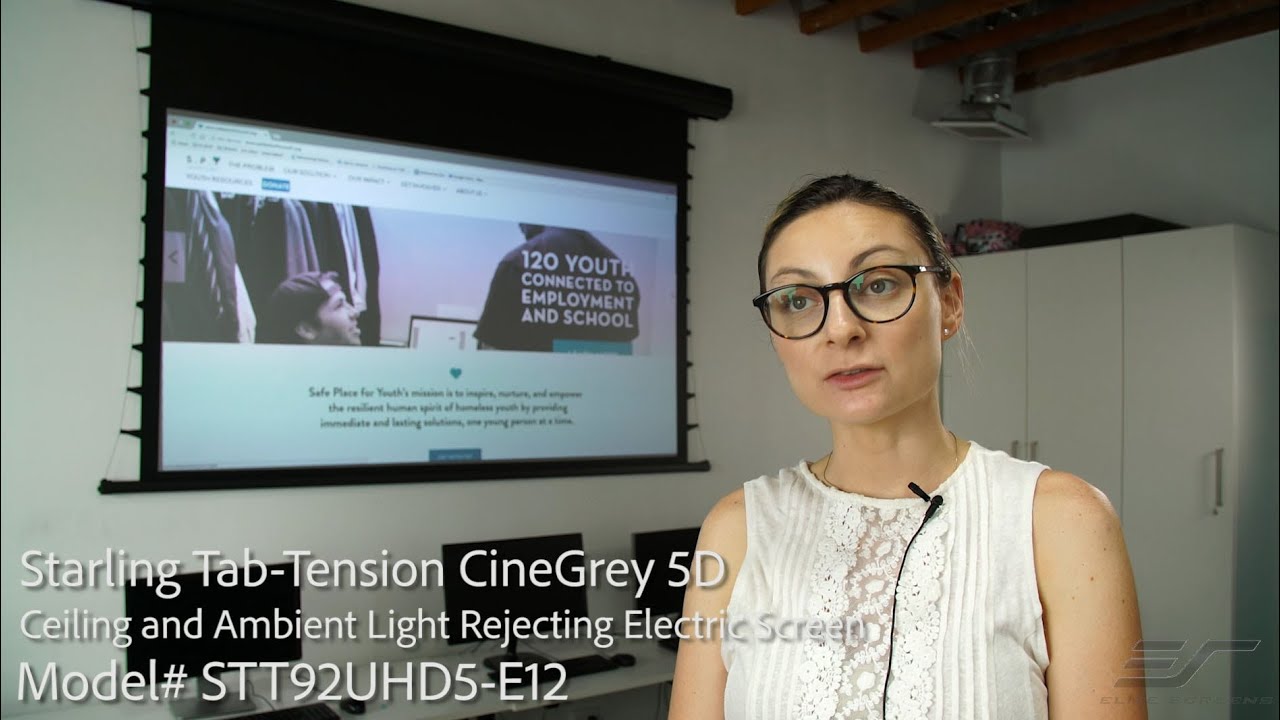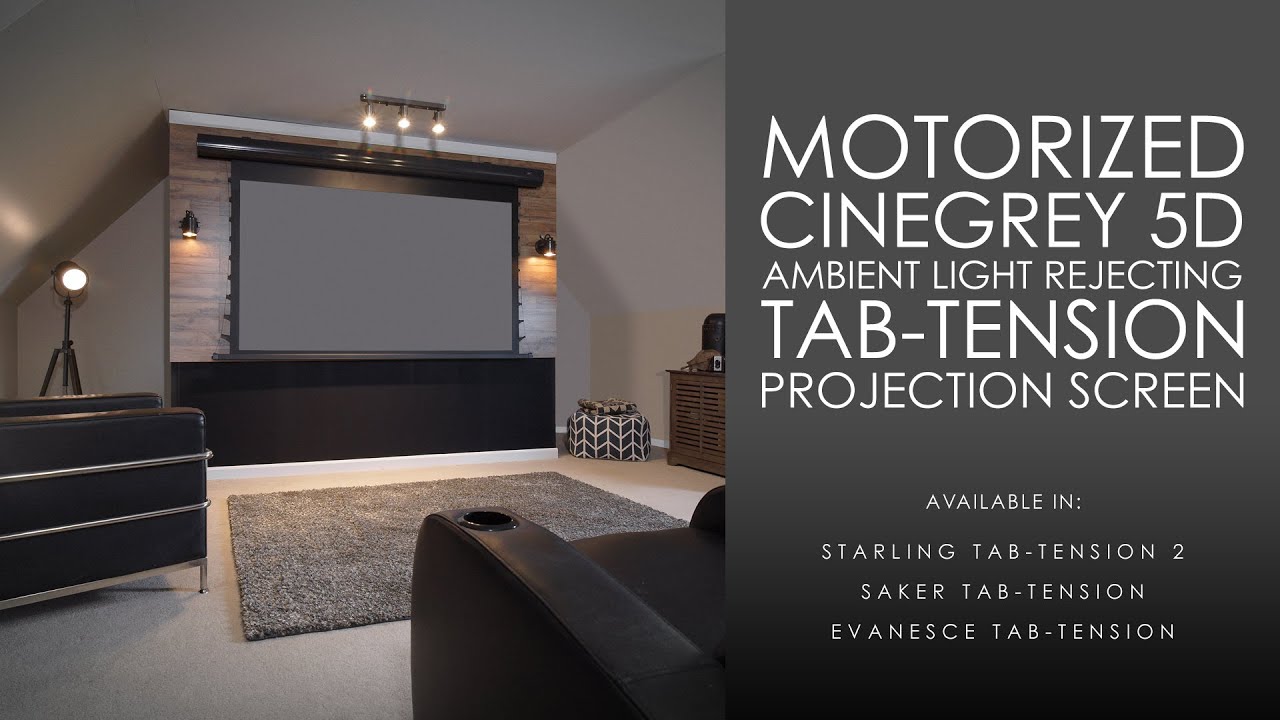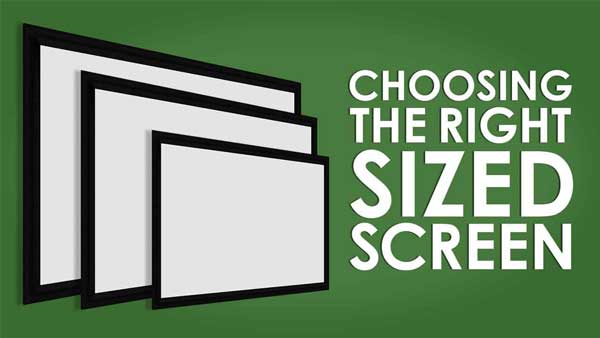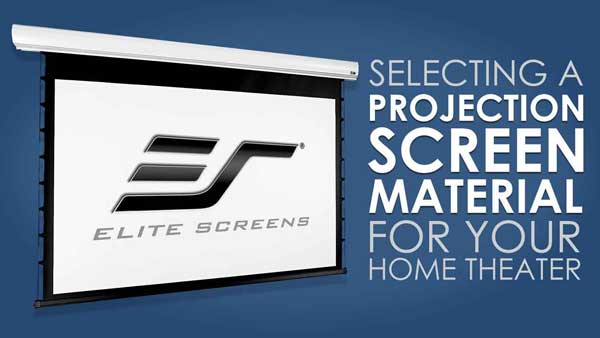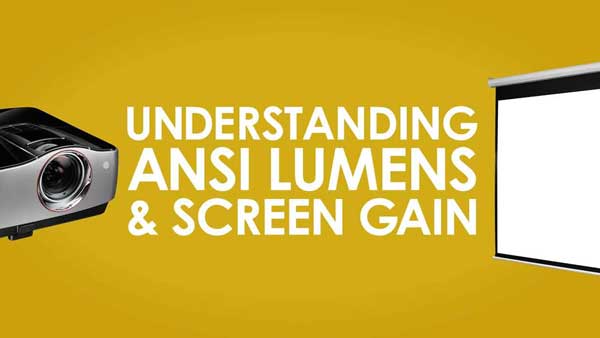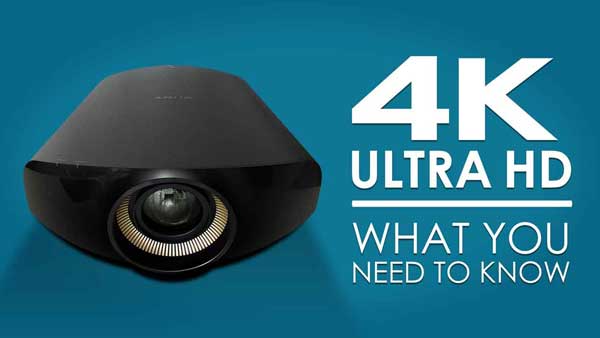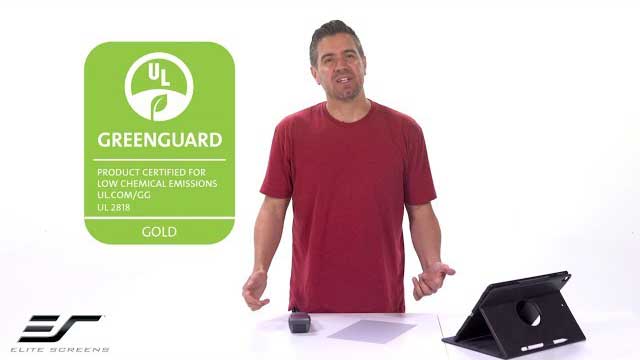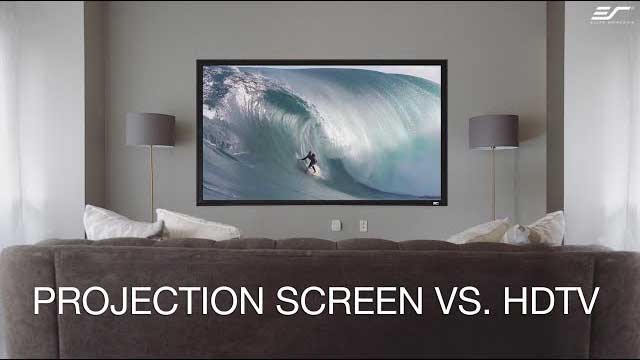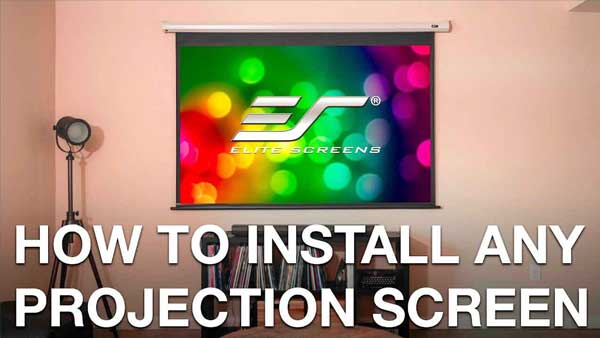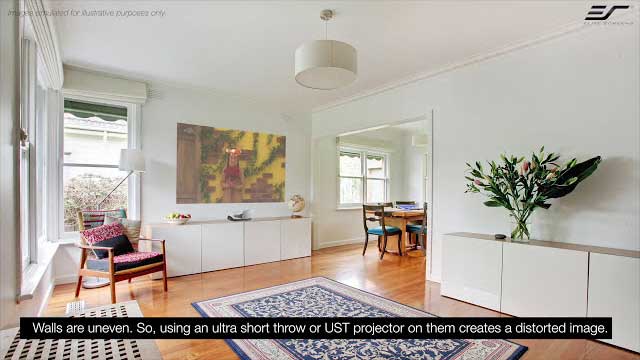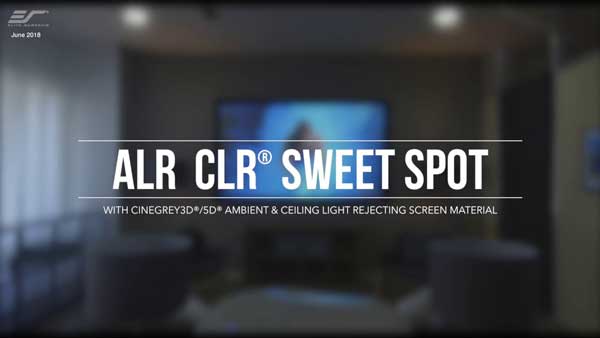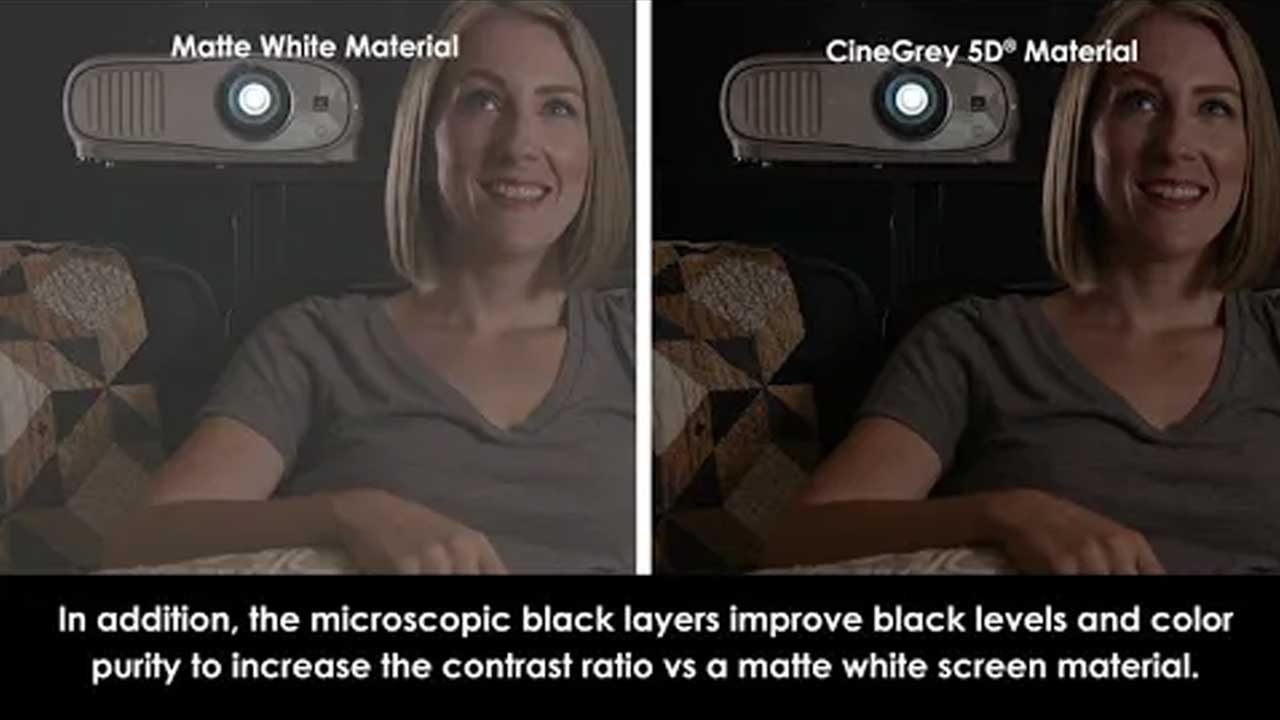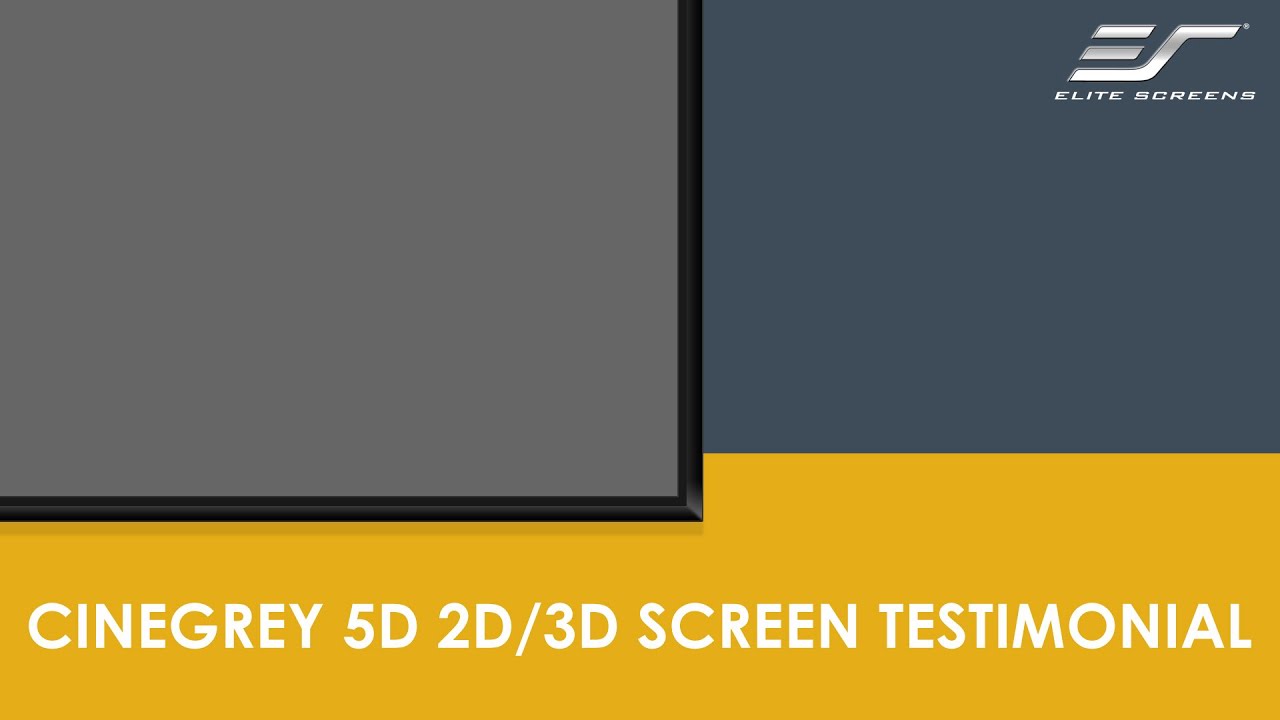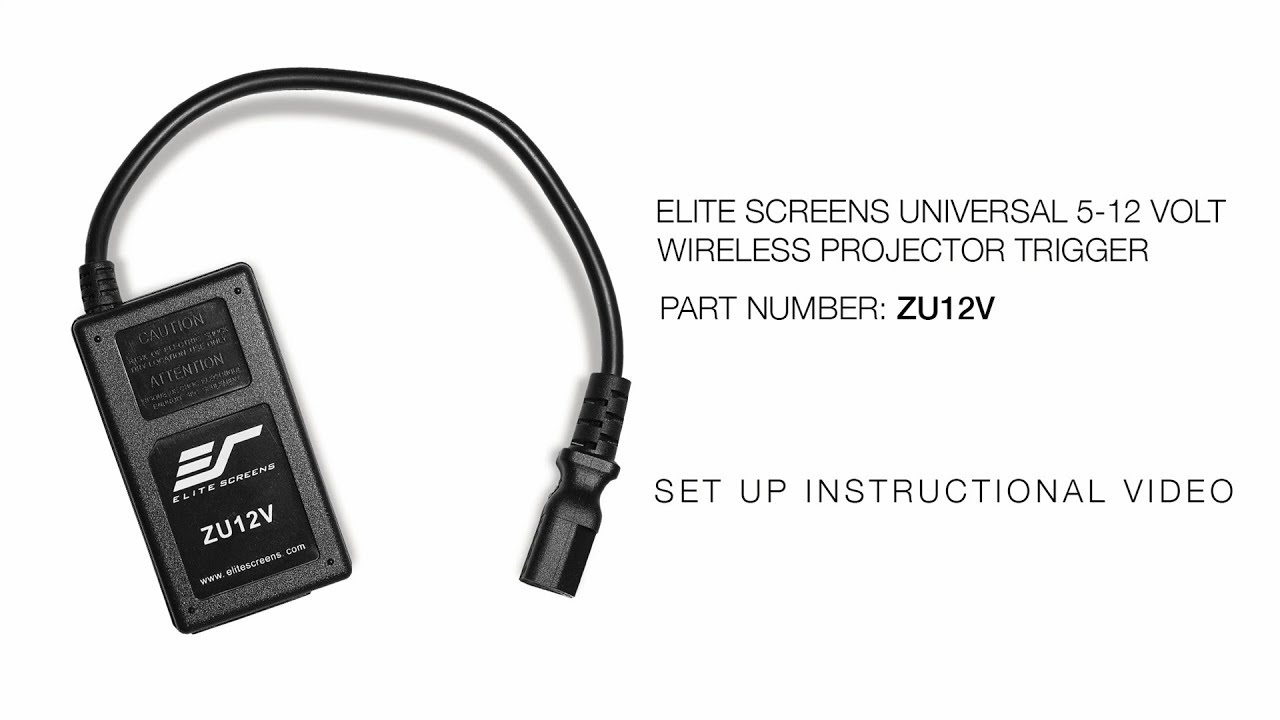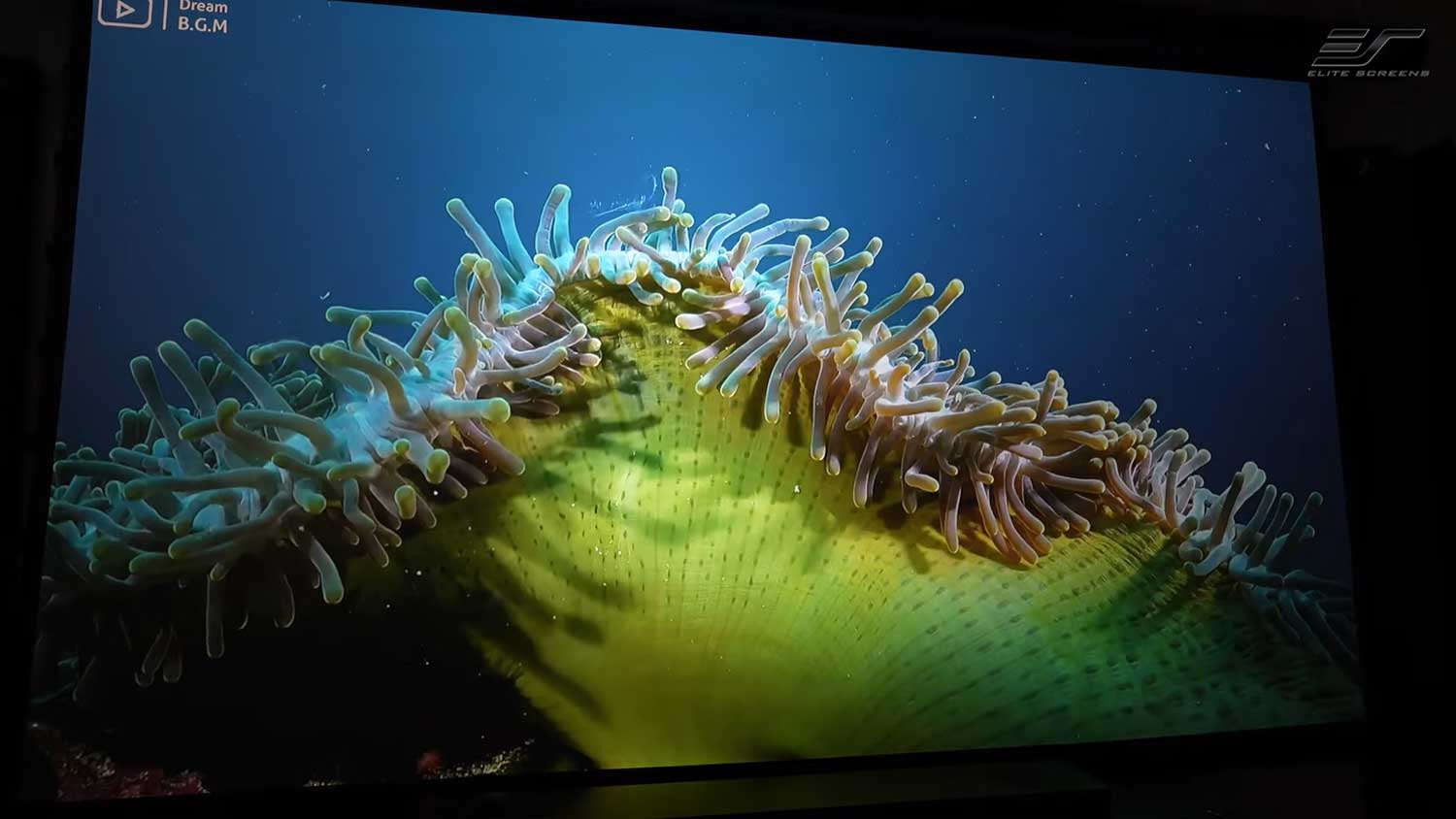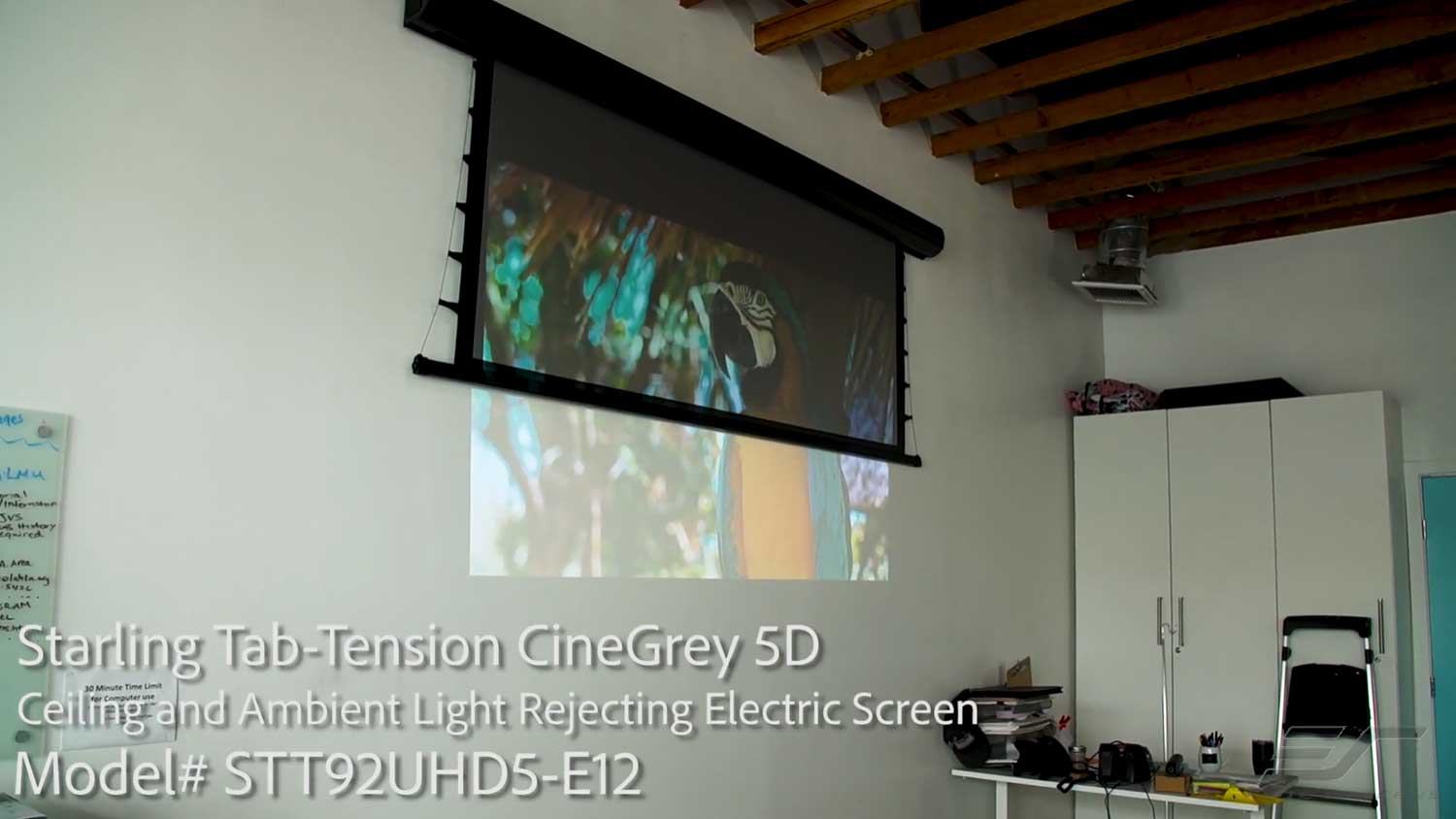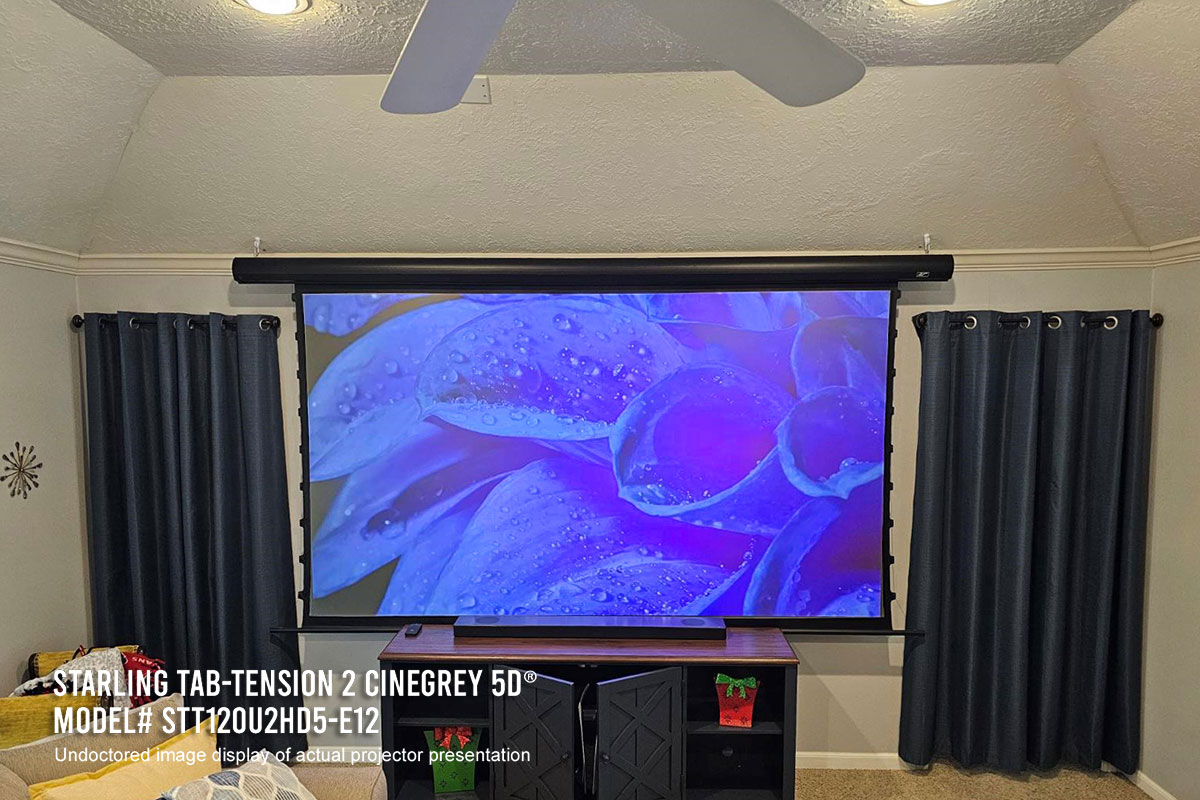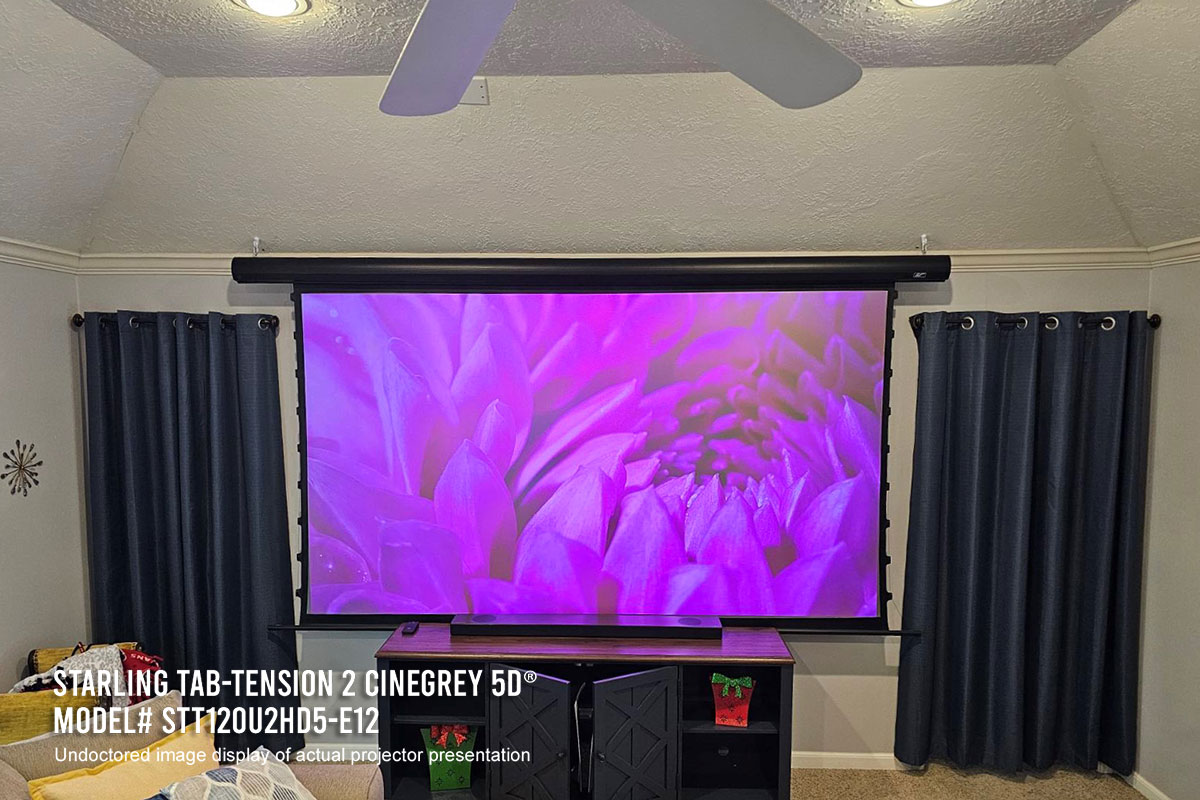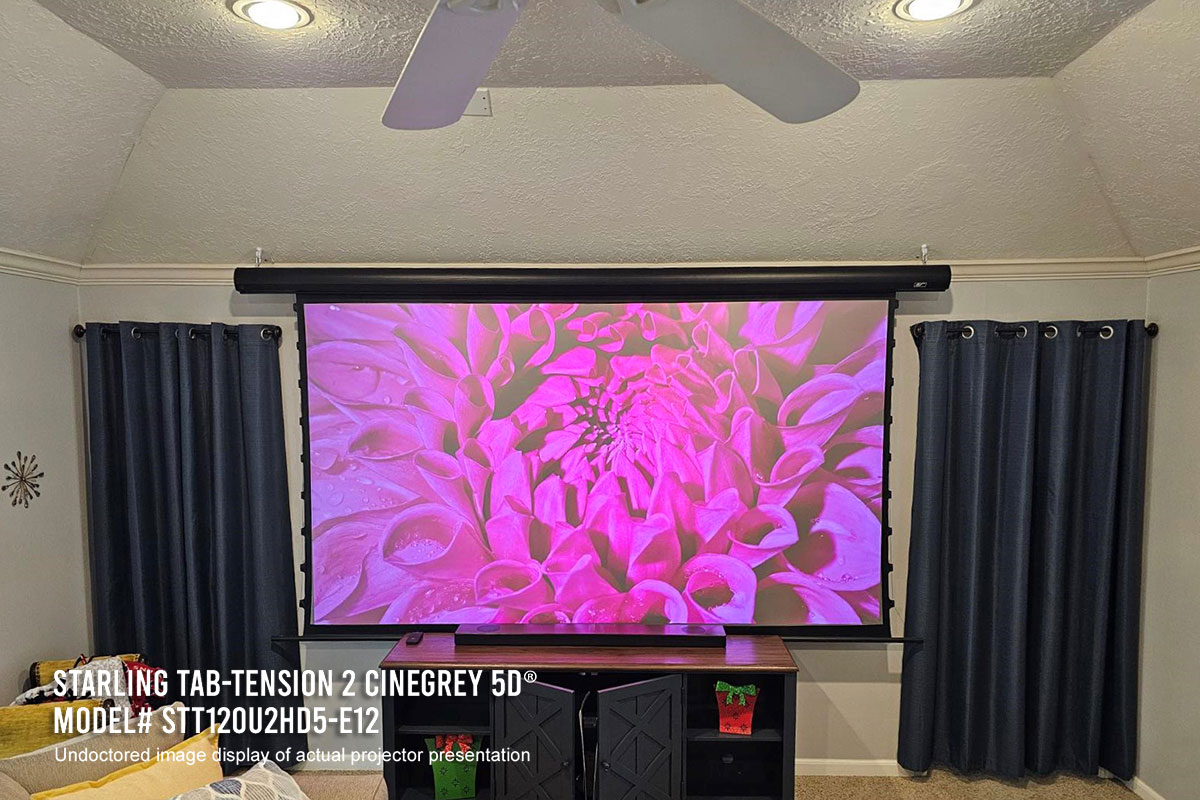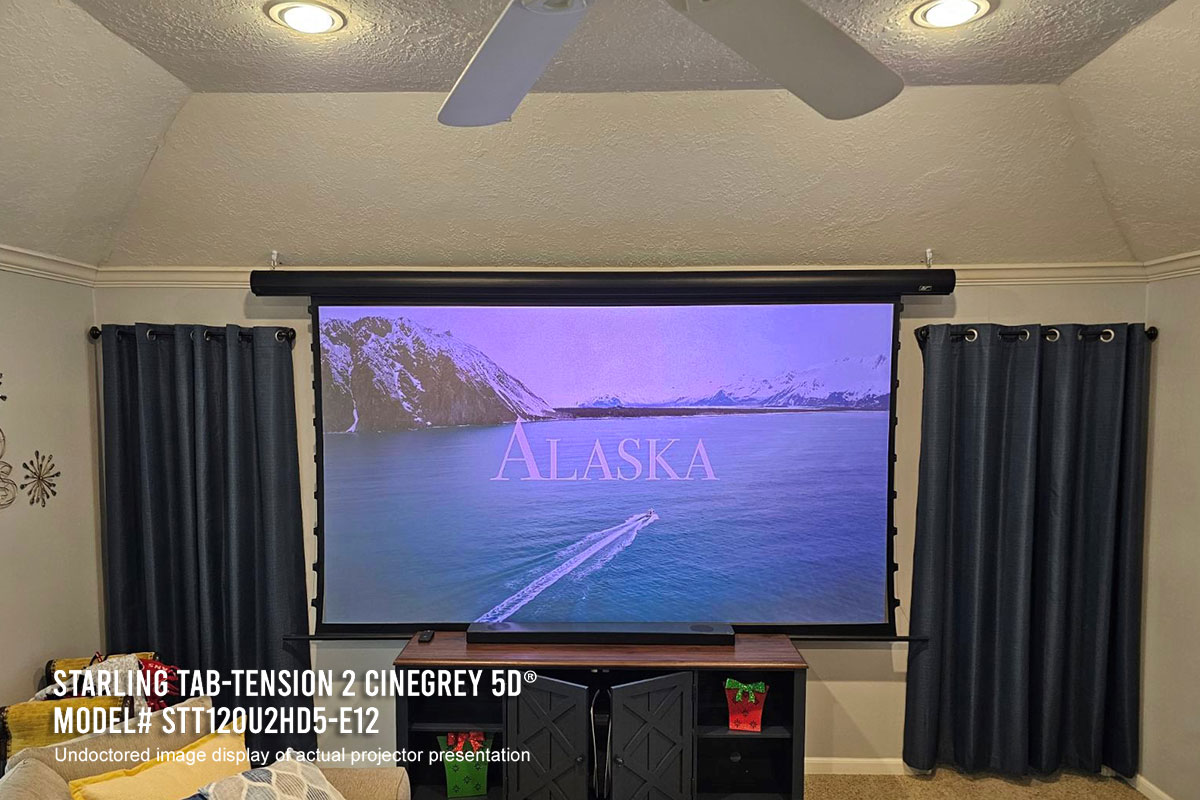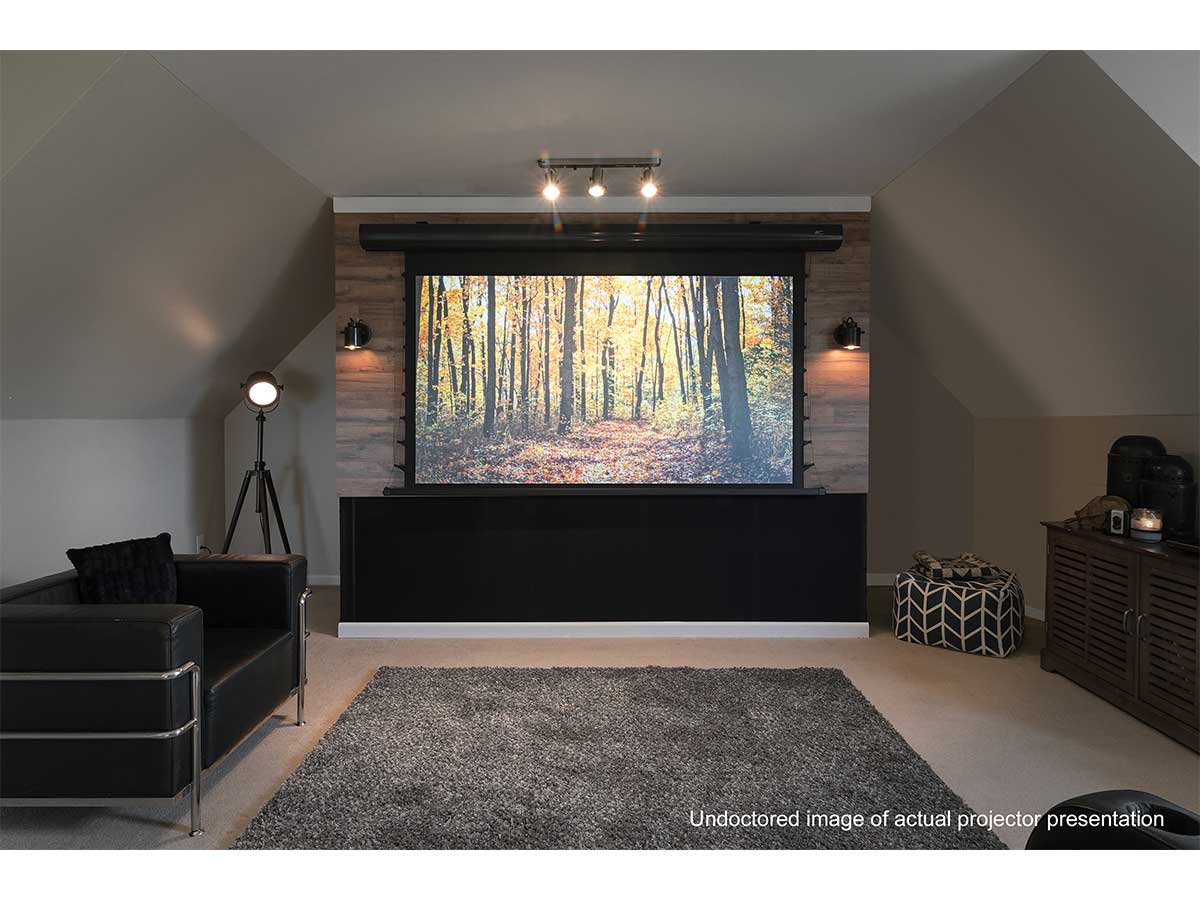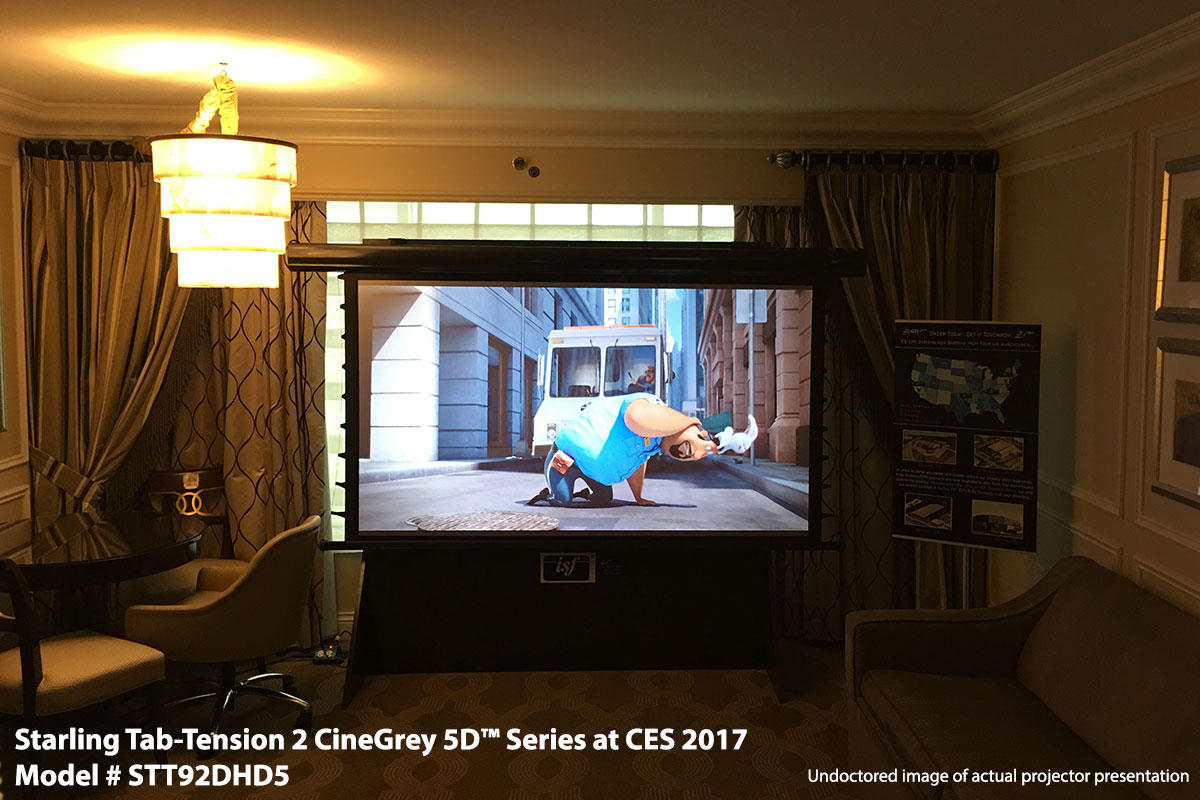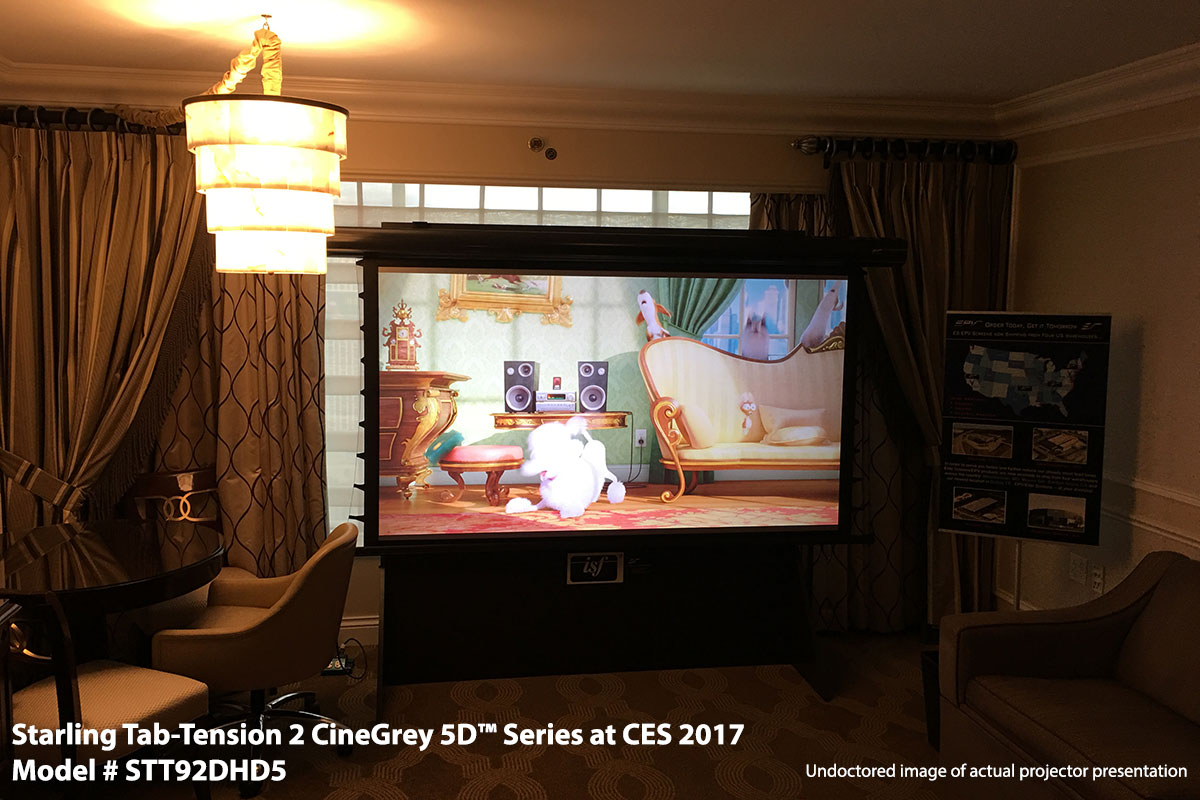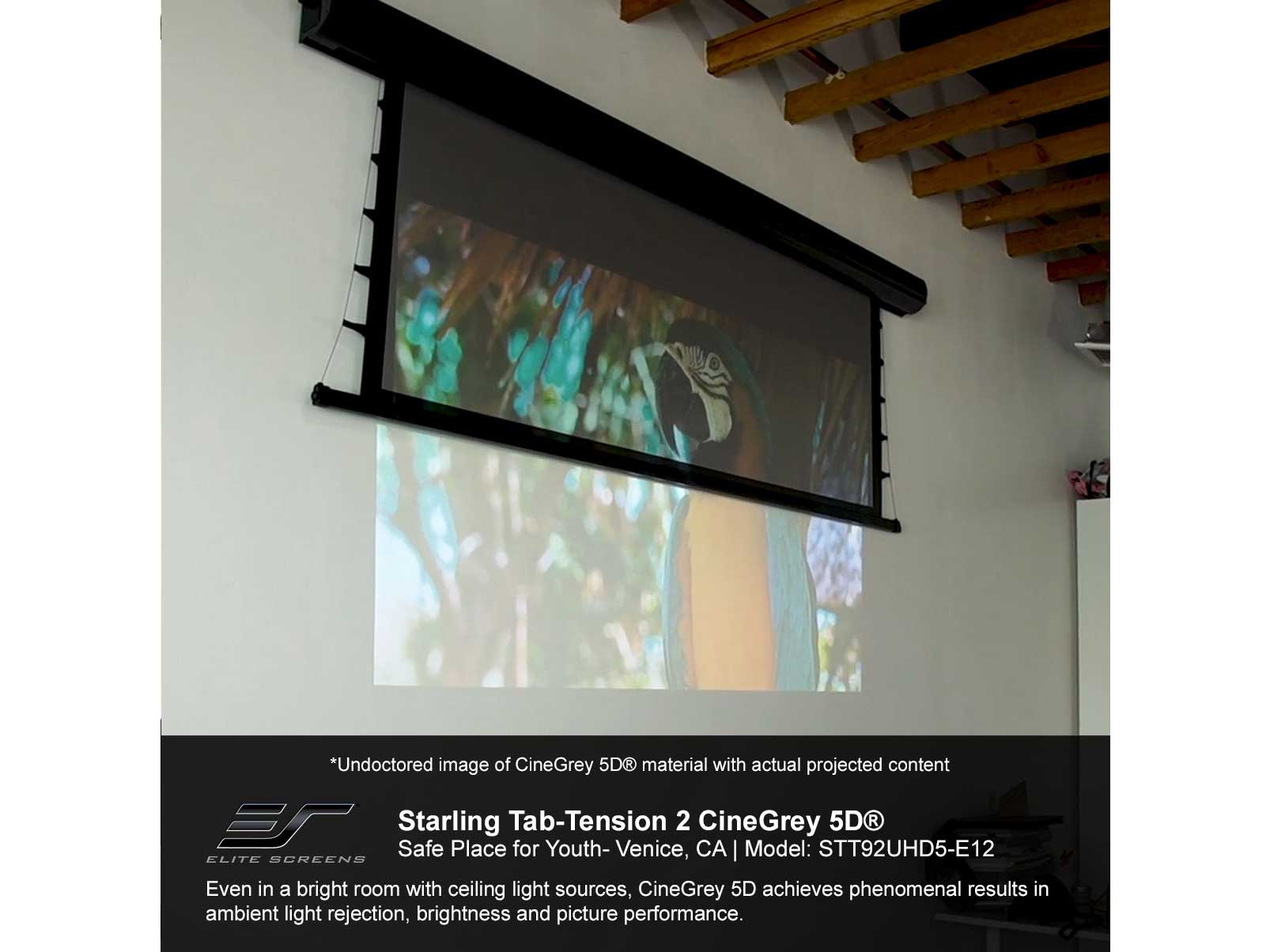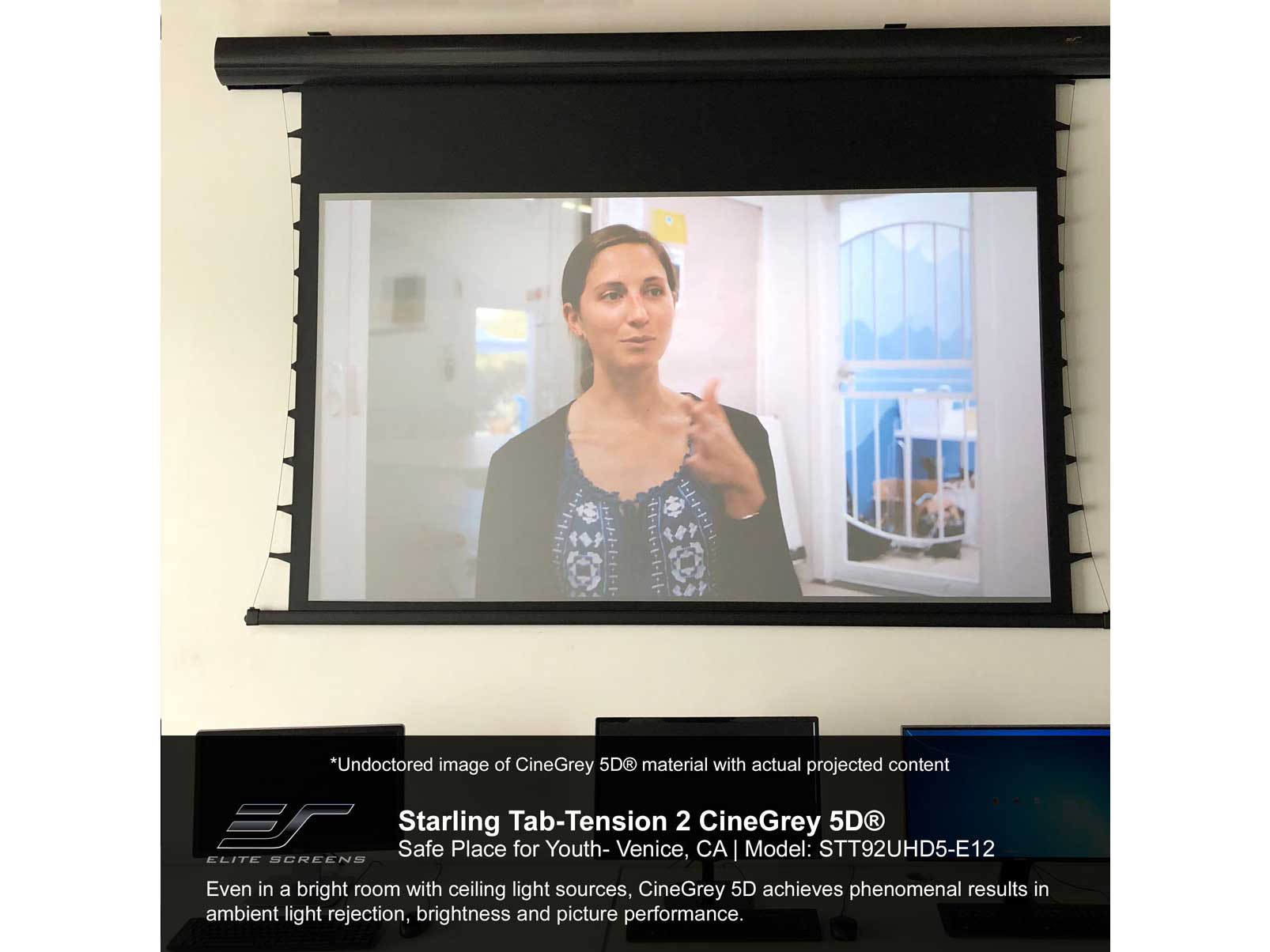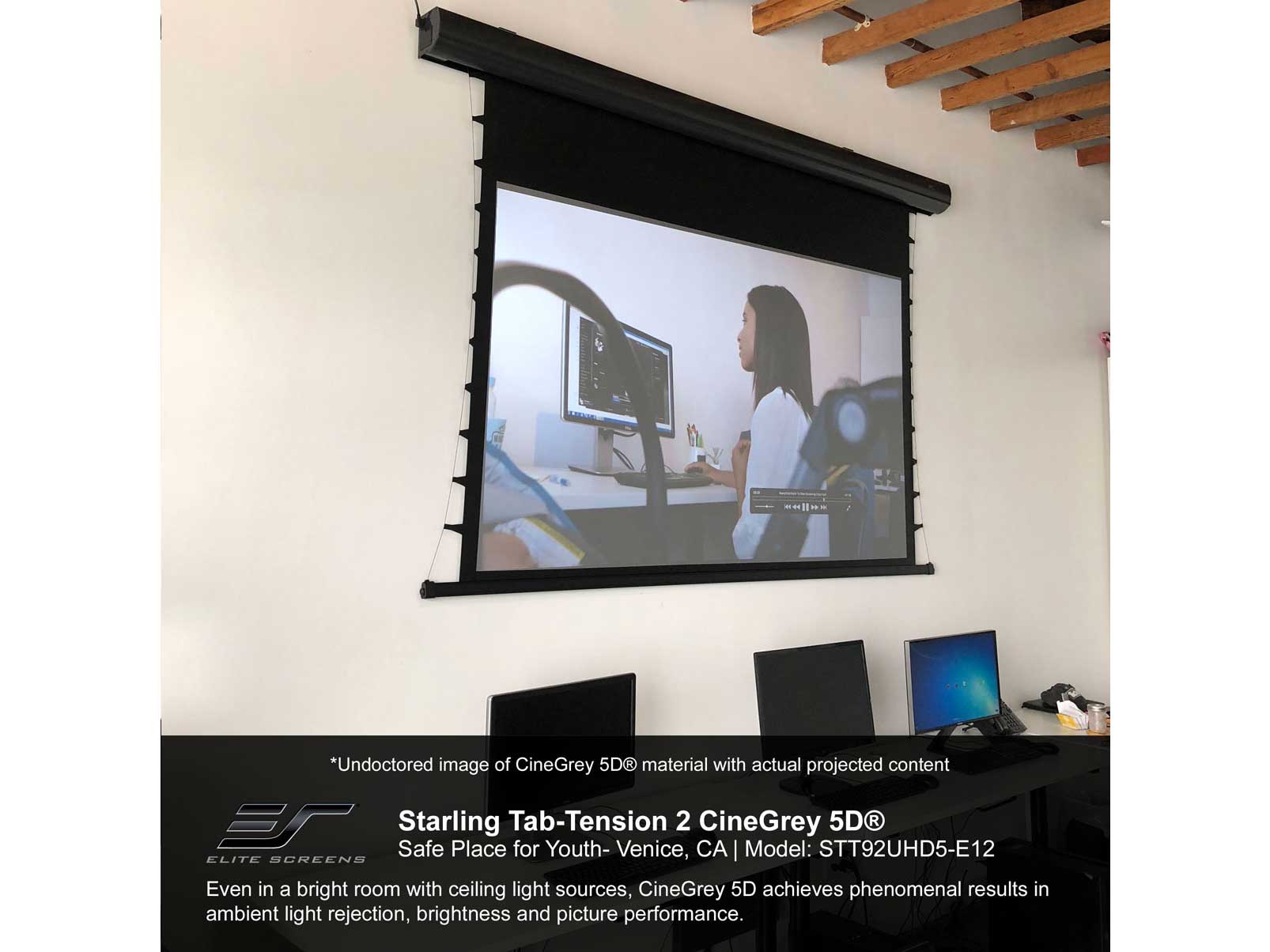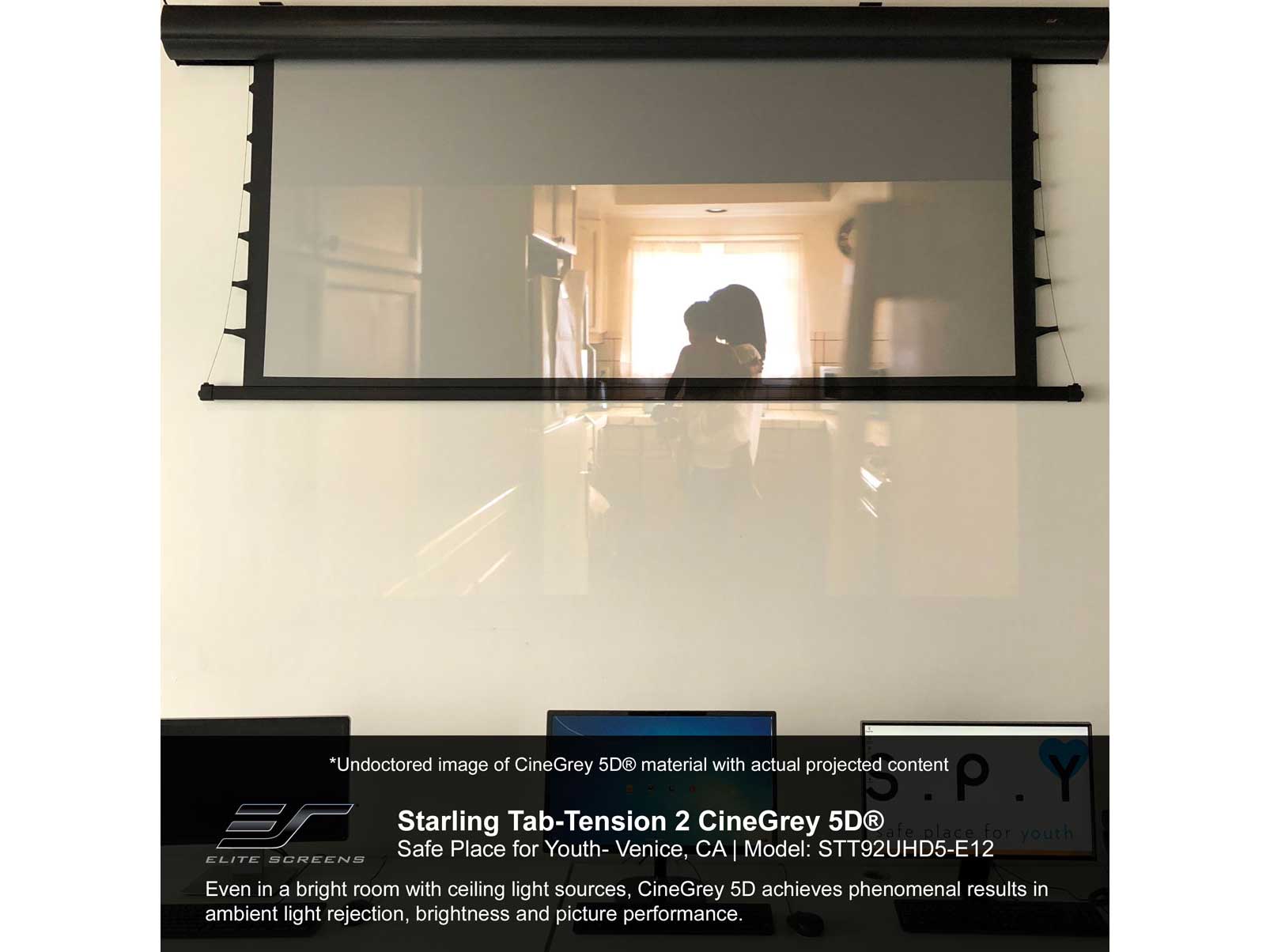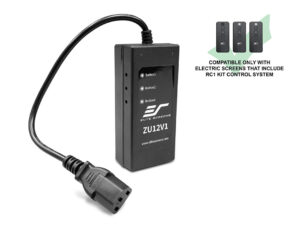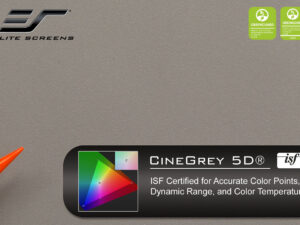Motorized Ambient Light Rejecting Projection Screen
Starling Tab-Tension 2 CineGrey 5D® Series
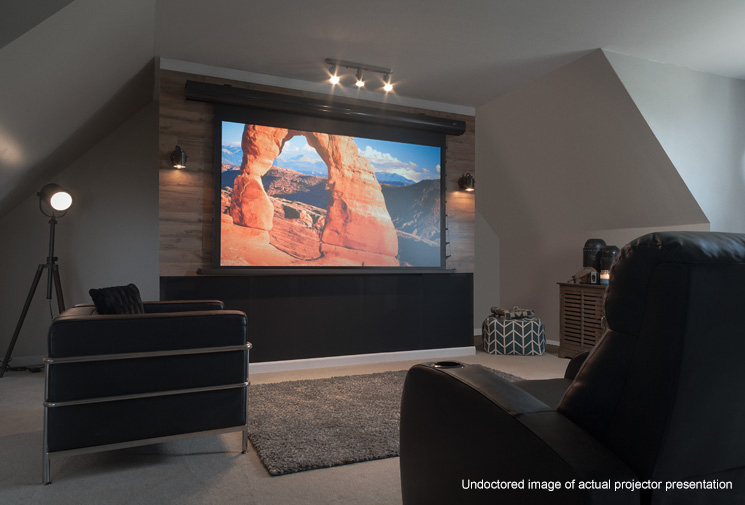 Starling Tab-Tension 2 CineGrey 5D®
Starling Tab-Tension 2 CineGrey 5D®RC1 Remote Kit
Starling Tab-Tension 2 with CineGrey 5D® Material
Starling Tab-Tension 2 with CineGrey 5D® Material
Starling Tab-Tension 2 Corner Detail
Starling Tab-Tension 2 Casing
Starling Tab-Tension 2 End Cap
Starling Tab-Tension 2 with CineGrey 5D® Material Side View
Starling Tab-Tension 2 with CineGrey 5D® Material
Starling Tab-Tension 2 with CineGrey 5D® Material
CineGrey 5D® Material Comparison
The Starling Tab-Tension 2 CineGrey 5D® Series is an electric motorized retractable projector screen that uses an Ambient Light Rejecting material. The retractable feature provides flexibility to mounting the screen without dedicating its designated location to exclusively one purpose. The ambient light rejecting material is formulated to sustain excellent color reproduction and contrast for enhanced picture quality in environments with little control over room lighting.

- Not Compatible With Ultra-short/Short Throw Projectors
- Buy a Screen Material Sample clicking here
| Viewing Angle | 80° |
|---|---|
| Gain | 1.5 |
| Compatible Projection | Standard "Long" Throw |
| Screen Material | |
| Material Type | Ambient Light Rejecting (ALR/CLR®), Silver & Grey |
Screen Material
- Award-winning CineGrey 5D® Ambient Light Rejecting Material
- Angular Reflective Material for Standard “Long” Throw Projectors. (NOT Compatible with Ultra/Short Throw Projectors)
- ISF Certified for accurate color points, color temperature and dynamic range
- Enhances contrast, brightness, and color in ambient light room conditions
- Active 3D, Passive 3D, 4K Ultra HD, and HDR Ready
- Black masking borders absorb projector overshoot and enhances visual contrast
- Extra top black masking border for high ceiling installation
- Available in the following diagonal sizes:
- 92″, 106″, 120″ and 135″ in 16:9 format
Design and Installation
- Elegant arcuate shaped case in black finish
- Floating brackets allow easy wood stud alignment for a wall or ceiling installation
- Mounting hardware kit included
- Wall mountable remote control cradle included
- Plug & Play ready, no hardwire installation required
Control System- SWIFT-RC1®
- Includes handheld Infrared (IR) and Radio Frequency (RF) remote controls, and a wall box controller for manual on-wall operation.
- User-friendly programmable vertical drop position for easy installation
- Wall box controller is detachable for a clean look while maintaining RF & IR functionality
- Built-in selectable channels allow one RF remote programming to control multiple screens and prevent interference
- 12v trigger feature allows the screen’s UP/DOWN operation to synchronize with the projector’s power cycle
- Wired 12v trigger capability via wall box controller
- Wireless 12v trigger capability via Radio Frequency remote control
Quality and Reliability
- Tubular motor allows swift operation with a superior weight tolerance and operational lifespan
- Low power consumption
- Flame Retardant – Complies with NFPA 701 Standards
- 2-year limited warranty, and 3-year warranty for ENR-G – Education, Non-profit, Religious and Government/Military organizations
- Lifetime Tech Support by Elite Screens Professional Service Team through Email, Phone or Online Form.
Dimensions Table
- Dimensions Table – M type (PDF)
- Dimensions Table – M Type – RC1 (PDF)
- Dimensions Table – J Type (PDF) Discontinued
- Packaging Dimensions (PDF)
User Guides
Comparison Tables
- Comparison Table (PDF)
- Comparison Table – J vs M Type (PDF)
- Electric Tab-Tensioned ALR Wall/Ceiling Screens Comparison Table
- CineGrey 3D®/5D® Comparison Table
- CLR®/ALR Materials Comparison
Others
- Please click here for installation tip (PDF)
Starling Tab-Tension 2 Series FAQ’s
No, the ZSP-TR03 is not compatible with the Starling or the Starling Tension.
The difference between the Starling Tab-Tension and Starling Tab-Tension 2 is that motor on the Starling Tab-Tension 2 series has been upgraded from a synchronous motor to a tubular motor. The tubular motor provides twice the operating rise/drop speed than that of a synchronous motor of the Starling Tab-Tension series. Additionally, the tubular motor’s more powerful design allows for superior weight tolerance and an extensive operational lifespan.
The Tension cords on the side of the screen do perform its pull effect to reduce side curving/curling, but Starling Tab-Tension, Saker Tab-Tension and Spectrum Tab-Tension use a weaved fabric. Unlike a flexible PVC fabric that allows for stretching and pulls to create a flat and taut projection surface, such as the one used on our CineTension B Series.
The ZIW In-Wall switch is compatible with all of Elite’s electric retractable floor rising, wall/ceiling and in-ceiling/recessed screens, EXCEPT for the VMAX Dual®, VMAX Tab-Tension Dual, Starling, Starling 2, Starling Tab-Tension and the Starling Tab-Tension 2 Series.
CineGrey 5D® – Screen Material FAQ’s
The CineGrey 3D® (AT)/CineGrey 4D (AT)/CineGrey 5D® are angular reflective front projection materials that reflect at the mirror-opposite angle. If an ultra-short throw projector is used, the material will reflect the steep narrow light and reflect it upwards instead of to the viewer’s eye level.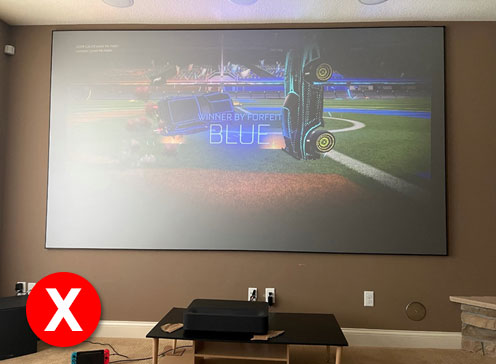
Image shows how a UST projector with CineGrey 3D looks like in a room with ambient light.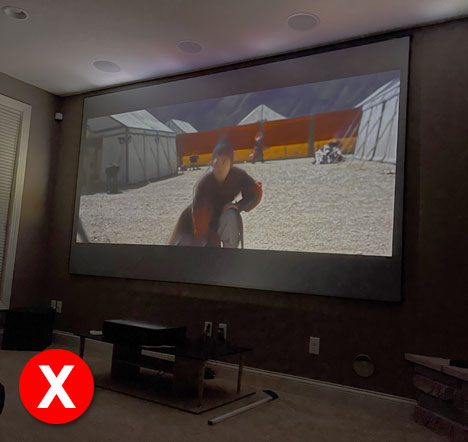
Image shows how a UST projector with CineGrey 3D® looks like in a room with lights turned off
The image appears to look good, but is still reflecting the projector light upwards and causing a hotspot in the middle of the image. Overhead lights are being absorbed/reflected off the material while providing great color saturation, image brightness, and black levels for a contrast rich presentation. Model# AR100DHD3 – CineGrey 3D® EDGE FREE 100” Diagonal 16:9 Fixed Frame with JVC LX-NZ3B 4K HDR Laser Projector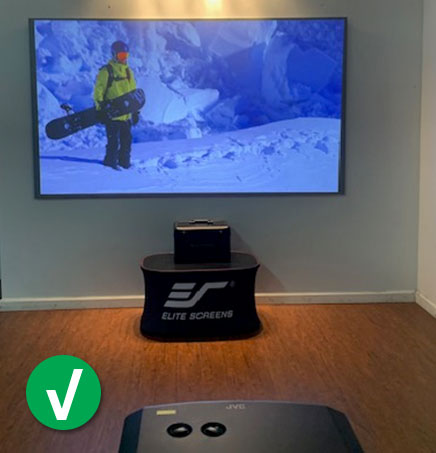
Image shows how good a performance can be obtained using a standard throw projector with ceiling lights above
Elite Screens’ CineGrey 3D® (AT)/4D (AT)/5D® is a color neutral smooth surface with sparkling elements to increase screen gain in an ambient light room environment. These special characteristics incorporates a diffusion layer over a highly reflective surface which scatters ambient light while improving picture performance with a brighter image. The projector itself, however also plays a big part in creating a hot spot. Projectors highest brightness levels are focused in the center, and only about 70% to 80% in the corners. In other words, the uniformity itself is not spread entirely even across the screen, thus creating a brighter spot in the center area. To combat this, we recommend the following.
1. Reduce the projector’s light output by choosing an economy mode
2. Install the projector further away from the screen, minimum of 1.5 x the image width
3. Go with a lower gain screen
No, ultra-short and short-throw projectors are not compatible with CineGrey 3D® (AT)/CineGrey 4D (AT)/5D® angular-reflective materials.
“Yes they can be used with Active 3D projectors.”
The CineGrey 5D®/CineGrey 3D® (AT)/CineGrey 4D (AT) are great for dark room environment also, but we must understand its limitations. First of all, both materials have narrow viewing angles. So if you wish to have a wide seating arrangement after 80 degrees, you will notice a drop in brightness. Second, because they are higher gain screens they reflect more projector brightness. This may tire your eyes, so we recommend using a less brighter mode if your projector has a such setting. If that is not a problem, then these materials will work. And the best thing is, because they are angular reflective material, the projector’s light will not diffuse in all directions like a matte white material. Meaning that they will not scatter the projector’s light and create side lighting. Thus, eliminating the need to absorb it with black velvet or paint a room really dark. Third, because both of these materials are made with a neutral gray substrate, the color balance and temperature will be exceptional. The dark gray also enhances contrast and great color saturation.
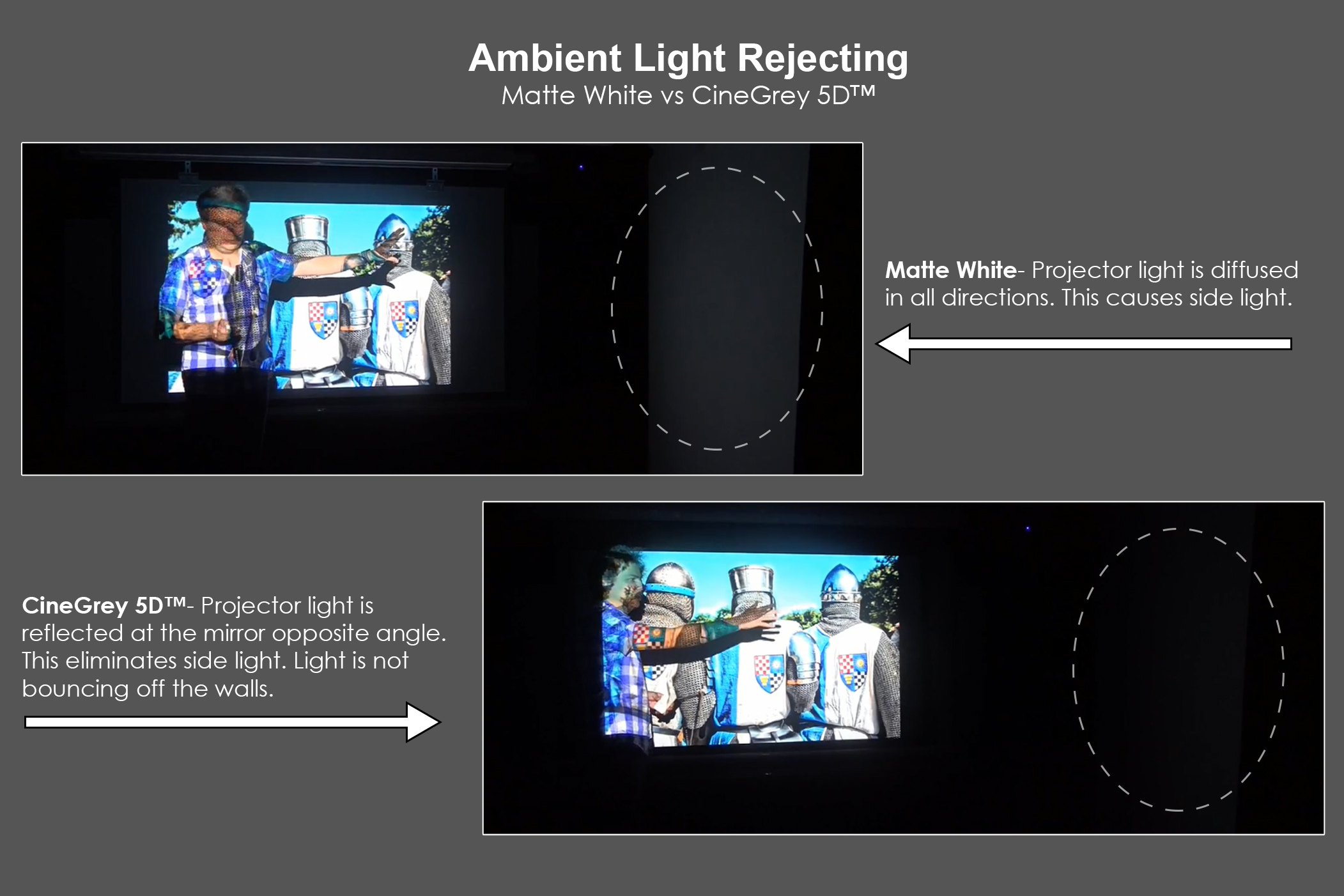
Projecting on a matte white screen material in a dedicated Home Cinema, typically requires a dark room environment for a great theatrical experience. Matte White materials diffuse light in all directions since that is their nature. This means that light will scatter everywhere in the room. That is why a dedicated Home Cinema room should try to have as much black walls and light absorbing materials to reduce the amount of scattered light. This scattered light eventually reflects back to the projection image and degrading the contrast ratio, color, and black levels which affect the fidelity of the picture. The CineGrey 5D’s CLR/ALR technology allows the projector’s light to reflect back at the mirror opposite end. This greatly reduces the amount of light scatter and instead focuses the light to the viewer’s sweet spot. In addition, the black microscopic layers improve black levels and color purity to increase the contrast ratio vs a matte white screen material.
CLR®/CLR®2/CLR®3 and CineGrey 3D/5D are Ceiling Ambient Light Rejection Screen fabrics, however the CLR fabrics are especially designed for Ultra Short Throw (UST) Projectors to reject ambient light. The CineGrey 3D/5D are typically made for standard “long-throw” projectors and require the projected light (angle in) to reflect (angle out) at the same angle to the viewer’s eyes, “sweet spot”.
Ceiling mounted UST projectors will not even work with Starbright CLR® materials because the material is specifically orientated to reject “ceiling light” or any type of lighting from above. This means that the screen will reject any overhead light, even from a compatible projector. Theoretically, you could invert the Starbright CLR® material to match with an inverted UST projector but the alignment will still not likely align properly with the human eye to deliver the ideal “sweet-spot” picture performance.
Our CineWhite® material is an excellent screen material that is highly recommended when you have either a really high output (+3000 lumens projector) and/or are able to control the light in your media room (i.e. a dedicated home theater). However, under conditions when a lower output projector, uncontrolled ambient light, or light colored walls and/or ceiling, the CineGrey 5D® has four key features that result in a better overall viewing experience. Video review of the CineGrey 5D® by AV expert Andrew Robinson
- The CineGrey 5D® material has an ambient light rejecting surface. The material has an angular reflective material that incorporates a diffusion layer over a highly reflective surface. This causes direct light from the projector to reflect squarely into the viewer’s field of vision while the outer contrast layer enhances image quality while absorbing indirect ambient light.
- The CineGrey 5D® contains elements of a silver screen despite its dark appearance. These both work to enhance the contrast ratio and color reproduction in either a well lit or a dark room. With most standard white materials, the image will become washed out when ambient light is present. The ambient light reflecting properties allow the CineGrey 5D® to maintain the image quality even under conditions where there is a high amount of light. In light controlled rooms, there are still certain reflective surfaces that may interact with the projected image such as the colors of the walls/ceiling. The grey/silver properties of the CineGrey 5D® reduce the impact the reflective surfaces, such as light colored walls and ceiling, have on the screen image. Although a white surface is recommended in completely controlled designs, the difference in grayscale between the CineGrey 5D® and CineWhite® surfaces are so slight that they may not be noticeable to most human eyes.
- The CineGrey 5D® is a 1.5 gain screen material that improves the image quality when active 3D projectors are used. There is approximately 50% loss of brightness when 3D is activated and there is even more brightness (aka lumens) being lost when the tinted shutter glasses are worn. The 1.5 gain of the CineGrey 5D® reflects the image at 1.5 times the original brightness of magnesium carbonate which is the standard industry control for creating a 1.0 gain white projection screen.
- The CineGrey 5® is also a polarized material that allows for true 1080P 3D content when using a passive 3D projection system (i.e. dual projectors with an AFlex5D passive 3D video processor). The CineWhite® material is not polarized and thus the only 3D content that can be displayed on that surface must be from an Active 3D projector. In general, passive 3D is easier on the eyes as the viewer is able to see the image with both eyes at the same time rather than the left/right split that occurs during Active 3D.
A brighter projector (higher lumens) will help with image brightness but it does not help with color contrast or black levels. Since the projected image performance is important here, a contrast-enhancing material such as CineGrey 5D® is essential. White materials will reflect all of the light in the room; the projected light, indoor lighting, and sunlight through windows and doorways, everything. Because of this, the ambient lighting will still spoil image performance even with a bright projector. Ambient light rejecting (ALR) screens such as CineGrey 5D® filter out indirect light allowing your projected image to be what your audience will see instead of the extra glare. In addition to that, the screen’s filter layers enhance black levels and color contrast. This means that shadows, textures and slight variations in color shading in the projected image can be easily seen. Without an ALR material, such detail and clarity will not be visible. As you can see from the photos below, a bright projector does not enhance contrast.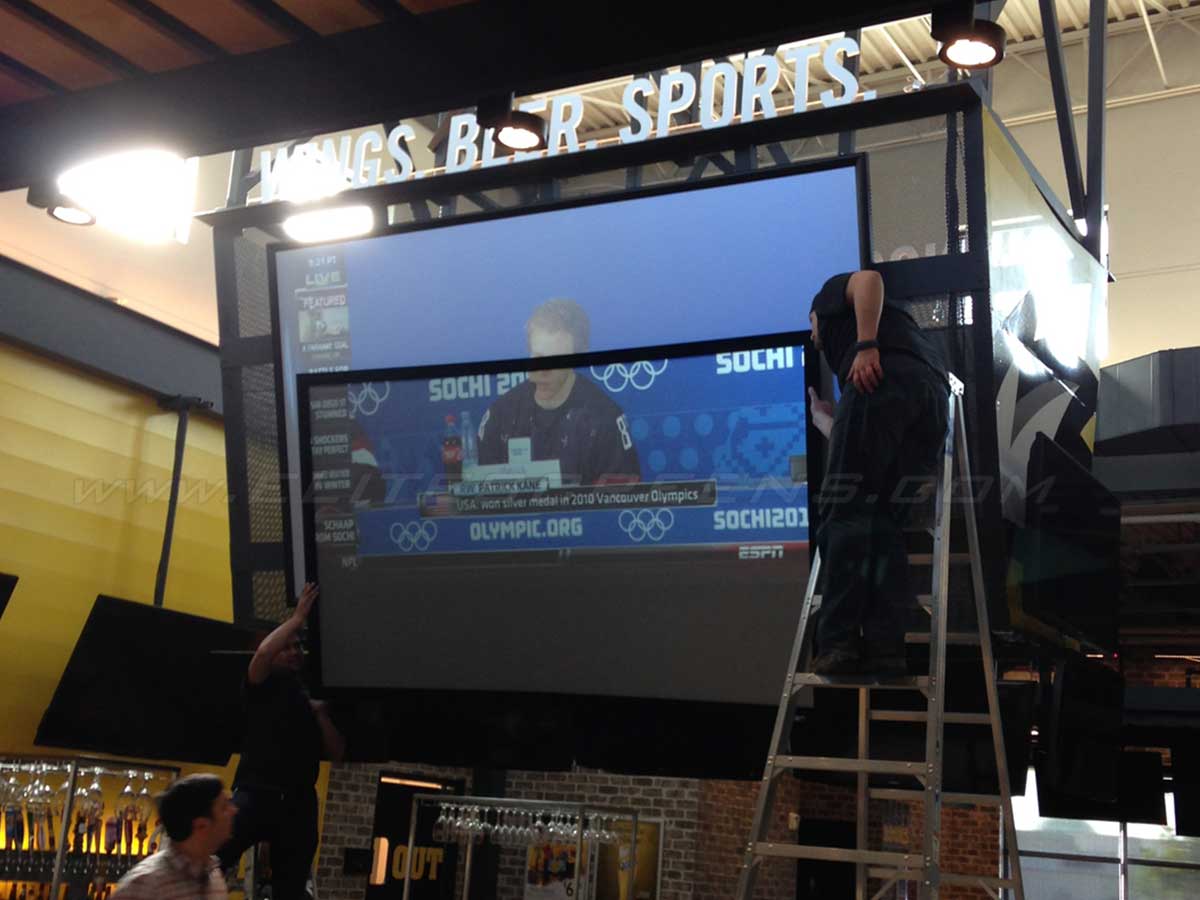
For a complete side-by-side comparison, please Click Here.
Although matte white materials such as CineWhite® are ideal for environments where room lighting can be controlled, the image is easily washed out by ambient light. Ambient Light Rejecting (ALR) materials such as the CineGrey 5D® are suitable for environments where there are high levels of indirect (ambient) light. This material trades off on the wide diffusion uniformity of white materials in favor of a brighter (angular reflective) image. Elite’s CineGrey 5D® incorporates a diffusion layer over a highly reflective surface which scatters ambient light while improving picture performance with a brighter image. This includes color neutrality with enhanced black levels and improvement over Active 3D presentations.
Matte grey was an earlier effort by projection screen manufacturers to enhance projector performance when projectors had limited performance ranges in need of a little help. Matte grey materials added a darker shade to projected images that would enhance black levels to a degree. The down side is that a projector with a high lumens output and interior light control was required. The next generation materials we offer now are CineGrey 3D / CineGrey 5D. The CineGray materials are ambient light rejecting. This means that the new materials will give you flat panel display brightness even with high levels of interior lighting. The old matte grey materials are washed out by interior lighting. Also, the Cinegrey series of ALR and ceiling light rejecting (CLR) screen materials give reference grade quality that is world class certified by the Imaging Science Foundation (ISF) for its professional grade abilities to provide accurate color rendition, contrast, and black/white dynamic range. The CineGrey 3D® has a wider diffusion range while the CineGrey 5D® is brighter. Comparing either CineGrey 3D/5D materials to the old matte grey is like comparing a couple of souped-up Ford Mustangs to a Model T.
General Wall/Ceiling Electric Screens FAQ's
Elite provides binary codes for the IR remote, see below.
| Series | Up | Stop | Down |
| CineTension 2 Series | 1111 0000 0001 | 1111 0000 0010 | 1111 0000 0100 |
| Evanesce / Evanesce Tab-Tension B | 1111 0000 0001 | 1111 0000 0010 | 1111 0000 0100 |
| Home2 Series | 1111 0000 0001 | 1111 0000 0010 | 1111 0000 0100 |
| Spectrum Series | 1111 0000 0001 | 1111 0000 0010 | 1111 0000 0100 |
| Spectrum Tab-Tension Series | 1111 0000 0001 | 1111 0000 0010 | 1111 0000 0100 |
| Spectrum Tab-Tension 2 Series | 1111 0000 0001 | 1111 0000 0010 | 1111 0000 0100 |
| Starling 2 / Starling Tab-Tension 2 Series | 1101 0000 1000 | 1101 0001 0000 | 1101 0010 0000 |
| VMAX2 Series | 1111 0000 0001 | 1111 0000 0010 | 1111 0000 0100 |
| VMAX Tab-Tension Dual Series | 1111 0000 0001 | 1111 0000 0010 | 1111 0000 0100 |
Elite’s V2.0 infrared remotes
| Series | Up | Stop | Down |
| V2.0 infrared remotes | 1111 0000 0010 0101 1101 1101 1010 1001 | 1111 0000 0001 0101 1100 1100 0111 1000 | 1111 0000 0100 0101 1110 1110 1100 1001 |
| V2.0 infrared remotes | 0011 0000 | 0101 0000 | 0110 0000 |
| ZZ Type | 0011 0000 | 0101 0000 | 0110 0000 |
Please see this chart.
Note: These measurements are accurate for USA only, other countries may be equipped with different lengths for each model.
| Series Name | Model Sizes | Length of Power Cord |
| CineTension2 | All Size | 98.4″ (2.5M) |
| Evanesce B | All Size | 98.4″ (2.5M)+ with extra control box |
| Evanesce Tension B | All Size | 98.4″ (2.5M)+ with extra control box |
| Evanesce | All Size | 98.4″ (2.5M)+ with extra control box |
| Evanesce Tension | All Size | 98.4″ (2.5M)+ with extra control box |
| Evanesce Plus | All Size | 98.4″ (2.5M)+ with extra control box |
| Home2 | All Size | 98.4″ (2.5M) |
| Kestrel | All Size | 98.4″ (2.5M) |
| Kestrel Tab-Tension | All Size | 70.8″ (1.8M) |
| Kestrel Tab-Tension CLRX | All Size | 70.8″ (1.8M) |
| Kestrel Stage | All Size | 98.4″ (2.5M) |
| Kestrel Home | All Size | 98.4″ (2.5M) |
| Saker | 150″ below | 98.4″ (2.5M) |
| Saker | 150″ above (150″) | 98.4″ (2.5M) |
| Saker Tab-Tension | All Size | 98.4″ (2.5M) |
| Saker Plus | All Size | 98.4″ (2.5M)+ with extra control box |
| Spectrum | All Size | 98.4″ (2.5M) |
| Spectrum Tension | All Size | 98.4″ (2.5M) |
| Spectrum2 | All Size | 98.4″ (2.5M) |
| Starling | All Size | 98.4″ (2.5M) |
| Starling 2 | All Size | 98.4″ (2.5M) |
| Starling Tab-Tension | All Size | 98.4″ (2.5M) |
| Starling Tab-Tension 2 | All Other Sizes | 98.4″ (2.5M) |
| Starling Tab-Tension 2 | 92″ in CineGrey 5D | 98.4″ (2.5M) |
| VMAX2 | 150″ below | 98.4″ (2.5M) |
| VMAX2 | 150″ above (150″) | 98.4″ (2.5M) |
| VMAX Dual® | All Size | 98.4″ (2.5M) |
| VMAX Tab-Tension Dual | All Size | 98.4″ (2.5M) |
| Yard Master Electric | All Size | 98.4″ (2.5M) |
| VMAX Tab-Tension 3 | All Size | 98.4″ (2.5M) |
Yes, please click HERE for a diagram to achieve a direct control (dry contact).
By exposing the red and green wires of the provided trigger, connect a 9-volt battery to the bare wires according to their polarity with the screen plugged in to the wall outlet. Once the wires make contact with the battery’s terminals, the screen will drop. Releasing the voltage from the battery will make the screen rise automatically. This indicates that the trigger and screen are functioning properly. Please check with your power source’s manufacturer for further assistance. If the screen does not drop when applying the voltage with the battery, the next step would be to test the screen’s circuit board. Do this by plugging in the provided wall box and pressing the DOWN button. If the screen drops, then you may need a replacement trigger. Please contact Elite’s service department for support by sending an email to [email protected].
Since the Spectrum’s Infrared (IR) Sensor is hidden within the ceiling, there are a few options in which to control a ceiling installed Spectrum Screen:
- IR Eye Extender (ZSP-EYE&12V): With the need of line of sight, the IR signal will not be sensed by the IR receiver built within the housing of the Spectrum. By using an IR eye extender that attaches via the Spectrums all purpose RJ45 port, the extended sensor provides a solution to this problem.
- Radio Frequency (RF) Remote (ZSP-RF-B, ZSP-RF-W): The Spectrum, unfortunately, does not come with an RF remote. It does, however, have an RF receiver built into the housing. Without the need of direct line of sight, an RF remote would be a good control option.
- In-Wall Switch (ZIW-B, ZIW-W, ZIW-W1): The spectrum comes with an all purpose RJ45 port. By routing a cable within the wall, the In-Wall Switch provides a close proximity control option. In addition, you can create your own in-wall switch by purchasing only our ZIW-Module.
- Wireless 12V Trigger (ZSP-TR01): Use your projector as a screen control option by hooking up this simple device to your projector’s output trigger port. If your screen doesn’t have an output trigger port, the Universal Wireless 12V Projector Trigger (ZU12V) works just as well for all projectors.
For the instructional guide (PDF) on synchronizing the ZU12V, please click here.
To watch the instructional video
Yes. This device goes between the projector and plug. It is designed for projector w/o low voltage trigger port to work with Elite Screen motorized screen.
Check your projector’s documentation to find out if your projector has a 5 volt or 12 volt trigger output. If it does then the ZSP-TR03 is compatible with your projector.
No, the ZPM-RT2 only works on the Spectrum 2 series.
Note: Compatible only with Spectrum 2 Series with serial number 198Exxxxx and after. Example. 198E00497
Most of Elite’s electric screen products are compatible with Harmony remotes and are in their database. The only electric screens series that are not compatible with Harmony remotes are the Starling and Starling Tab-Tension Series (Versions 1 and 2). New Elite Screens series may not appear in the Harmony database, but you can simply select the VMAX2 series as the IR codes are identical for all series. Click here to visit the Harmony website for further assistance with programming your remote with our electric screens.
Aluminum casings or “cans” are resilient to moisture and are generally used with higher quality screens. They also have a sliding track for the hanging brackets to allow versatility with your installation. Steel casings have a more simplified design with fixed end cap attachments. They provide excellent protection to you screen material but are geared for functionality without excessive spending.
It depends on how high you want to hang the screen. If you are planning on a high ceiling or in-ceiling installation, use a product with an extra black masking border like E24 (24″ drop) or E30 (30″ drop) model. Aside from that, our general product lines will accommodate your typical home or commercial presentation room ceiling heights. All of our manual and electric screens are suitable for wall or ceiling installations.
Unfortunately, we no longer provide limit switch adjustments. The screen is already deployed to its complete factory setting. We do not recommend making any vertical limit adjustments to the screen, as improper adjustments will affect the projection image, damage the unit and void your warranty. Over/false adjusting the drop will permanently damage the screen and will be unable to repair.
Your serial number can be found on both ends of the packaging box stickers, as well as on the screen itself.
Reference the list below on where to locate your serial number depending on the type of screen: On Screen Itself:
Manual Screens : end cap and weight bar
Motorized/Electric Screens : end cap and weight bar
Tripod Screens : rear side of casing (left hand side)
Fixed frame Screens : rear side of frame (bottom frame)
Light-On Screens: Back of frame
QuickStand Screens: Back of Case
Yard Master Screens (Folding Frame) : rear side of frame
Floor Pull up Screens : end cap
Yard Master Sport : weight bar
Pico Screens: on screen case
Pop-Up Cinema : User guide bag and/or stitched inside carrying bag
DIY Projector Screens: on box label
On Outside box
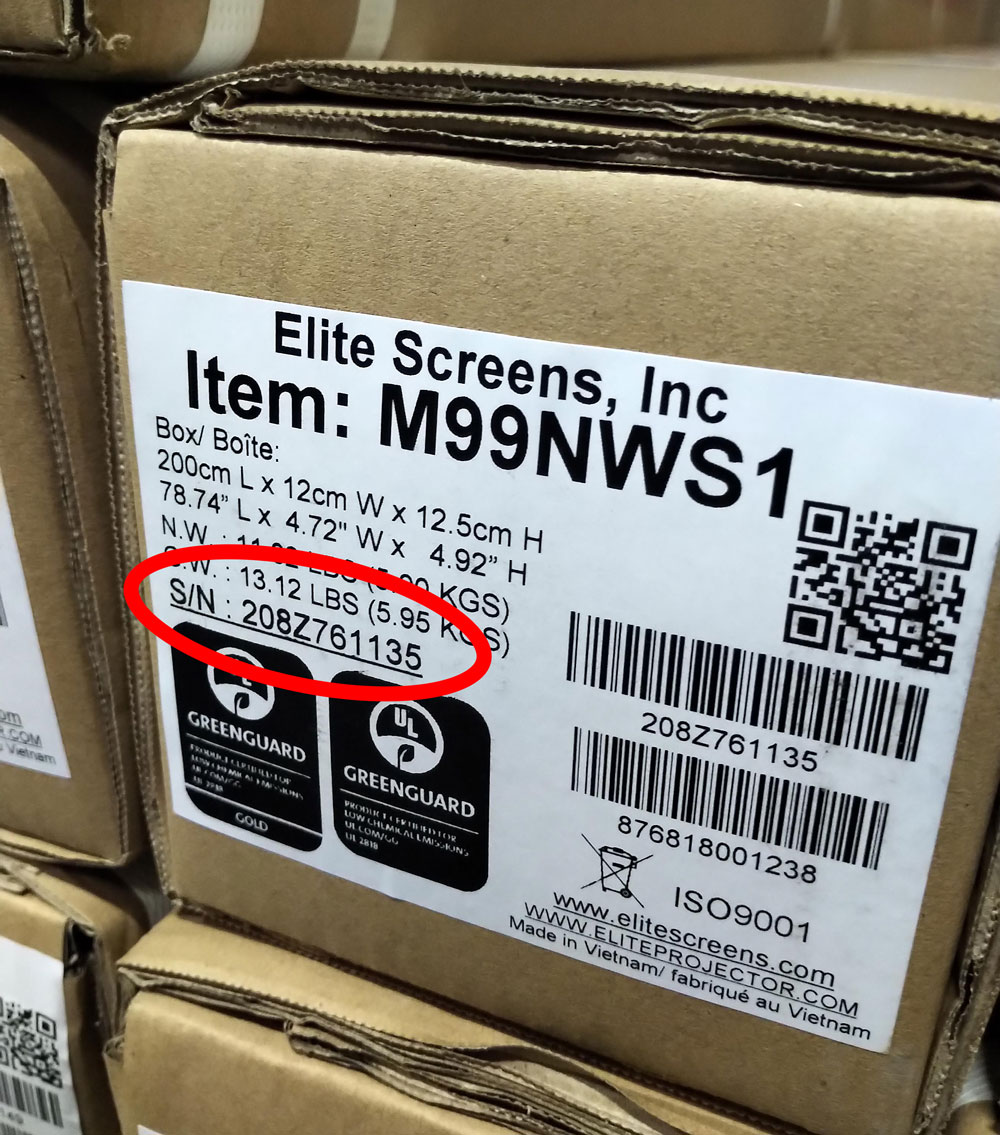
Elite strongly recommends using either a standard surge protector or a power conditioner on all electric projection screens.
Check your projector’s manual to see if your projector has a 5-12 volt trigger output. If it does then your projector has the ability to synchronize with your CineTension 2.
Please click here for the motor information of your Elite electric screen.
Power cord for all the wall-mounted electric screens we produce will be on either left or right side depending on the series.
The reasons why a customer would prefer the slower synchronized motor over the tubular is as follows: The synchronized motors are silent. Many consumers prefer that all of their home theater gear operate silently. The synchronized motor consumes considerably less power per operation than a tubular motor making it more of a green-conscious product. Because the synchronized motor is produced at a lower cost than the tubular motor, we can forward the savings on to the consumer by providing a more aggressive price point. Because of its slow speed, the synchronized motor generates less heat allowing it to enjoy a long operational lifespan. Lastly, the synchronized motor has a drop speed that is roughly equal to a projector’s power cycle.
No, your screen’s Top Black border has been set to deploy to its full extent. Attempting to increase will damage the motor and void your warranty with Elite Screens.
There are a few possible things you could check:
1. Make sure your wall plug has power and that the screen is properly plugged in.
2. If the screen works well with the wall switch but not with the remote controls, ensure that fresh alkaline batteries are installed in the remote controls.
3. Check your screen’s internal fuse. (Please call our Tech Support for location of fuse before tampering with the screen.)
4. Our Home2, CineTension2, Kestrel, Raptor and VMAX Plus 3/4 screens feature a tubular motor equipped with a Thermal Relay. This feature will automatically shut off the screen should your motor become too hot, thus preventing overheating of the motor. To correct this, simply leave the screen alone for 20-30 minutes and try again.
To ensure that your projector can support a trigger application, please be sure to:
– a. Reviewing your projectors user manual.
– b. Contact the manufacturer of your projector. If you do find that your projector supports a trigger application, connect the Elite Electric Screen Trigger Adapter cable from your Screen to your projector’s trigger port (Please consult a professional installer for further details on wiring and installation). Since Elite Screens only provides the screen 5-12 volt RJ-45 adaptor, you will need to contact your projectors manufacturer for the trigger adaptor of the projector. Most projector manufacturer trigger ports use a mini jack plug and adaptor that may be obtained at most local electronics stores. Please consult with your dealer or projector manufacturer for further details concerning this trigger adaptor and installation.
Tubular motors run faster and have a greater lift capacity. Synchronous motors are slower but are also quieter and more energy efficient. Since synchronous motors are smaller, they also have less torque, so we only use them in our smaller standard priced models.
Yes there is. You will need to splice your USB cable with an RJ45 cable. A USB has 4 wires, but you will only need the red and black. Splice them to the RJ45 orange and green wires and connect the USB. See diagram below for reference. (Not Compatible with SWIFT-RC1 Control System which uses RJ50) NOTE: If you are using your own RJ45, please use Pin 7 and 8 (Brown Pair Wire).
Click here for Color Codes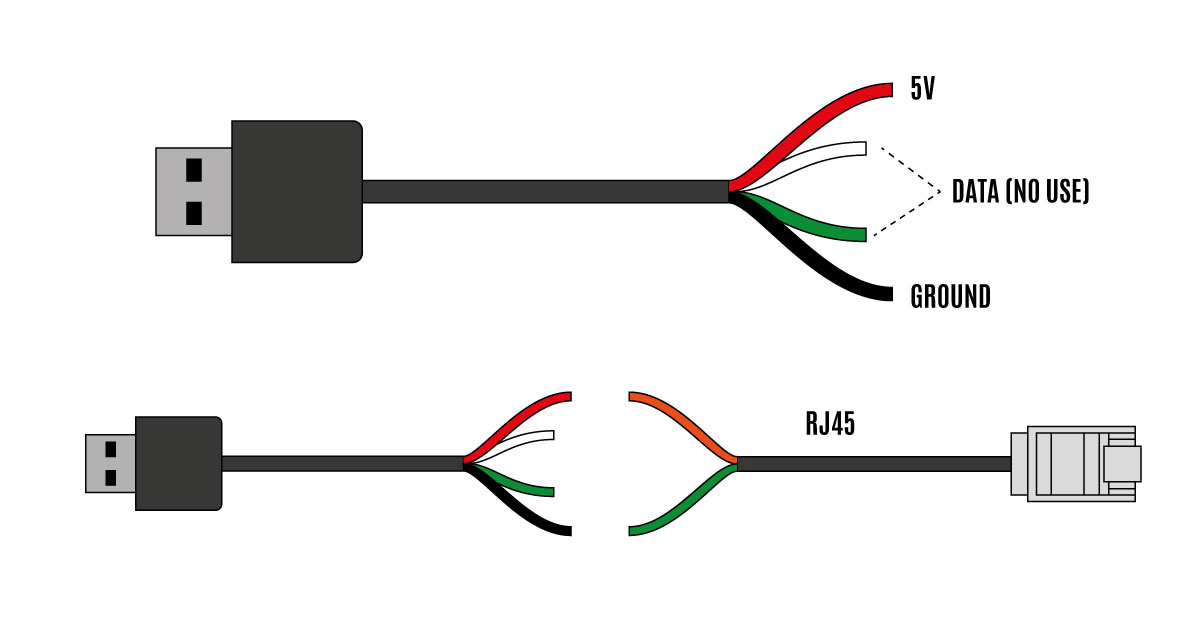
Please click here to view the Electric Screens Accessories chart.
No, Elite manual and electric projection screens are not designed for use as a window curtain and should never be exposed to direct sunlight. Prolonged exposure to solar radiation will destroy synthetic materials and such damage is not covered by our standard warranty.
Lifestyle Gallery
Undoctored image of actual projector presentation
2-year limited warranty, and 3-year warranty for ENR-G – Education, Non-profit, Religious and Government/Military organizations
Lifetime Tech Support by Elite Screens Professional Service Team through Email, Phone or Online Form.


